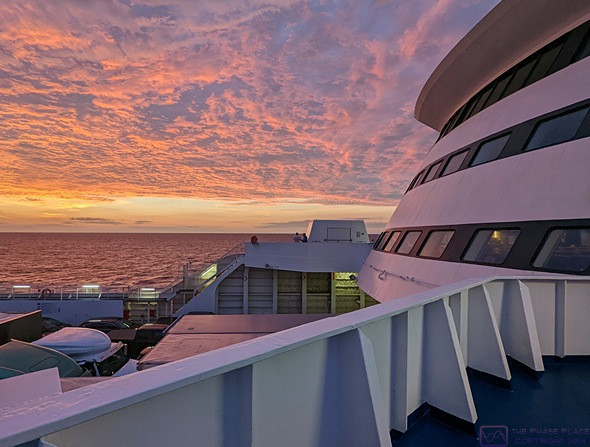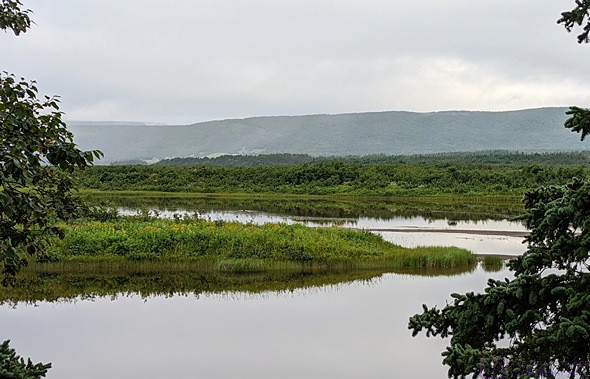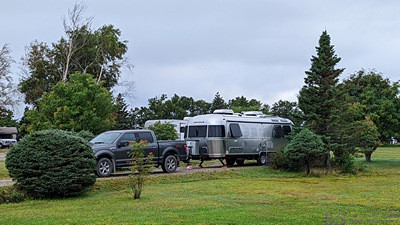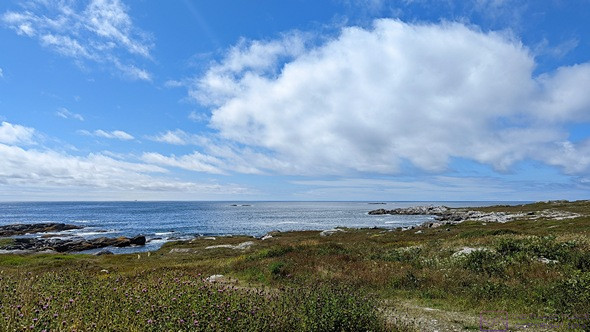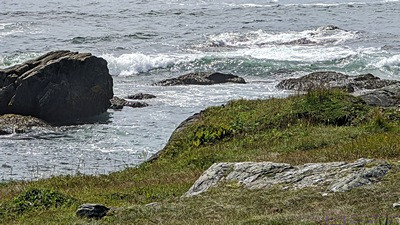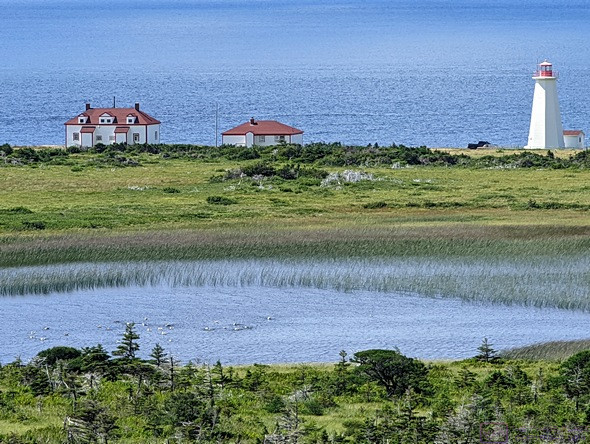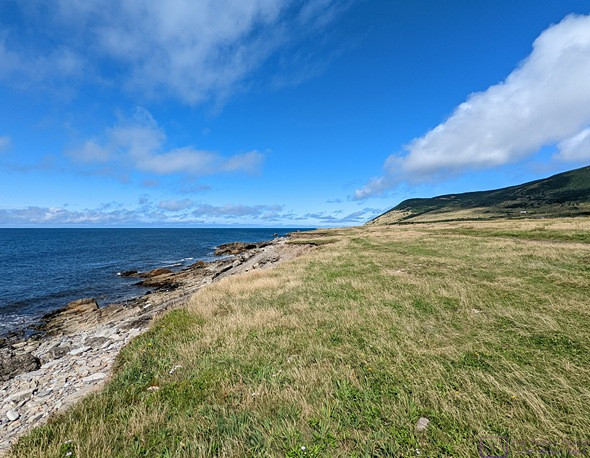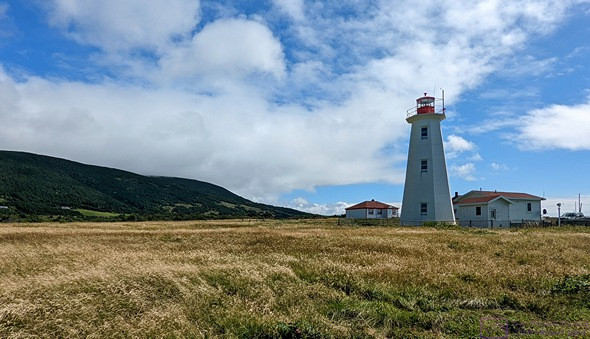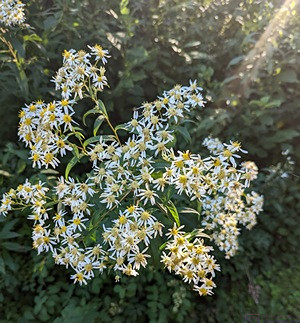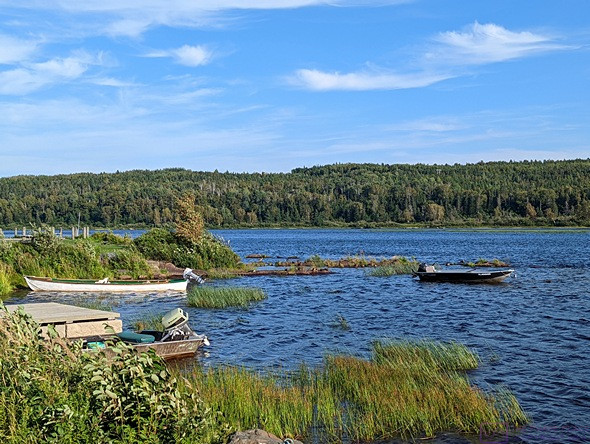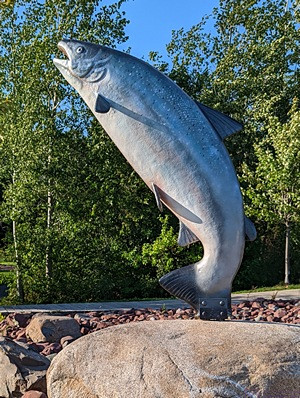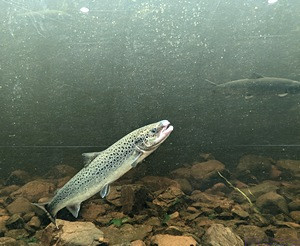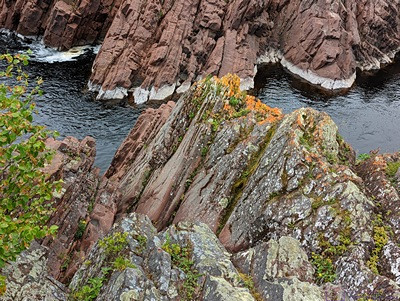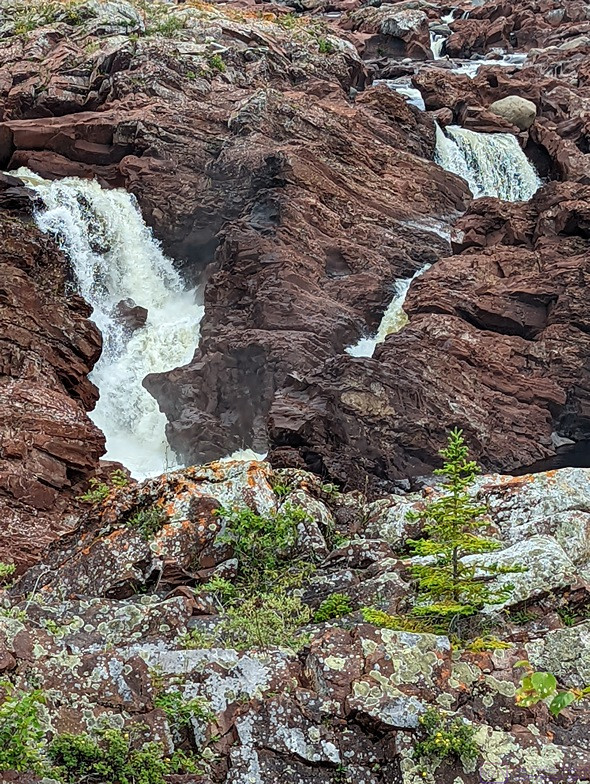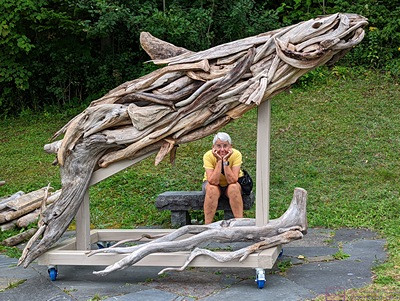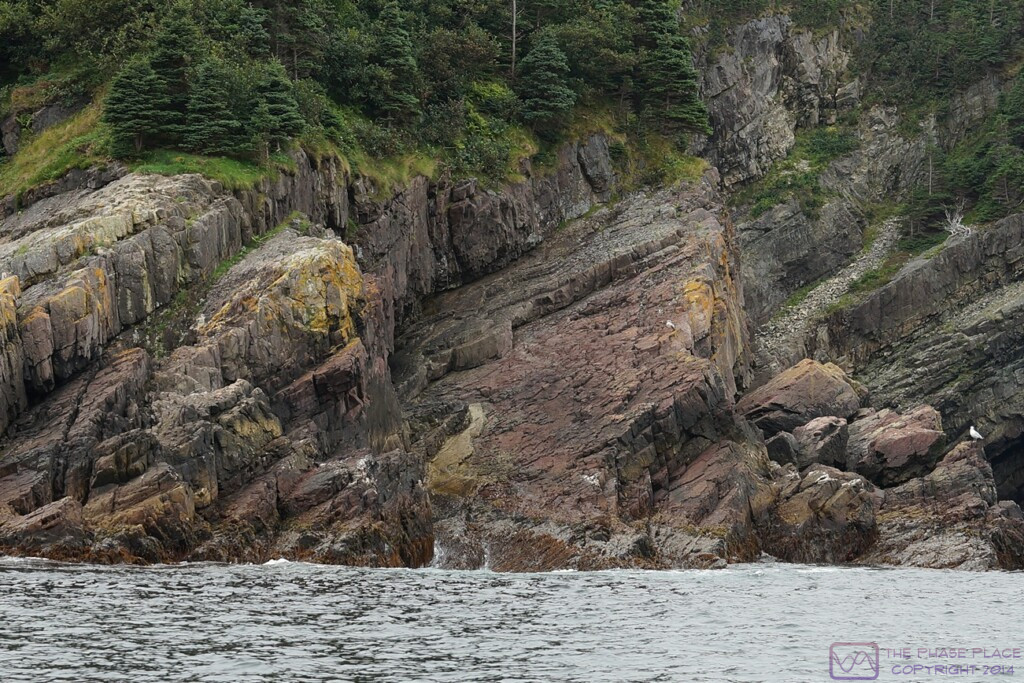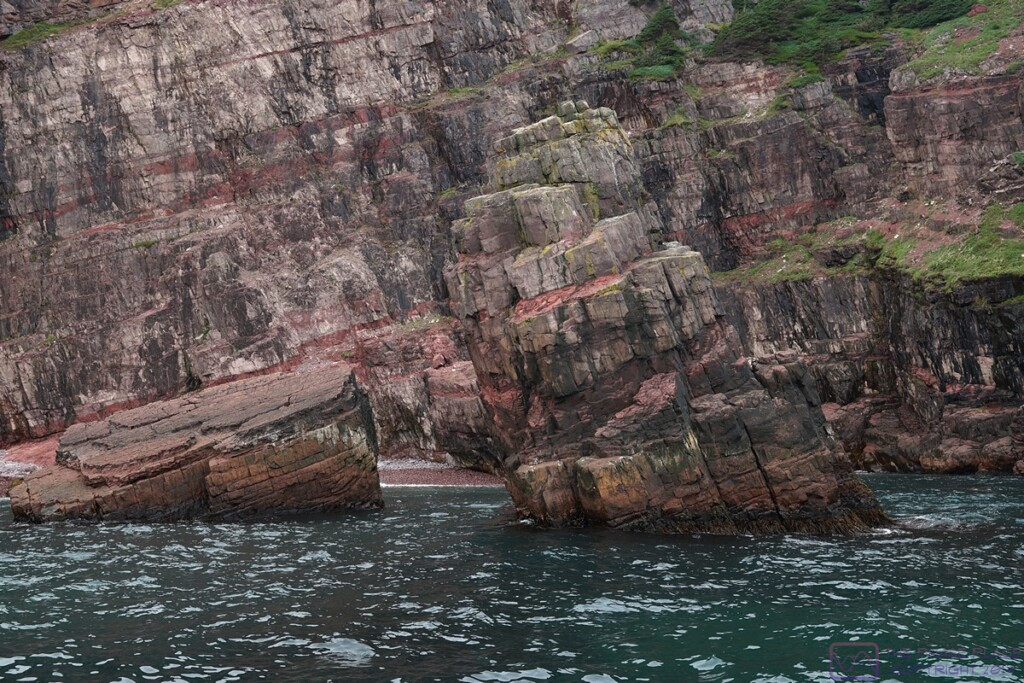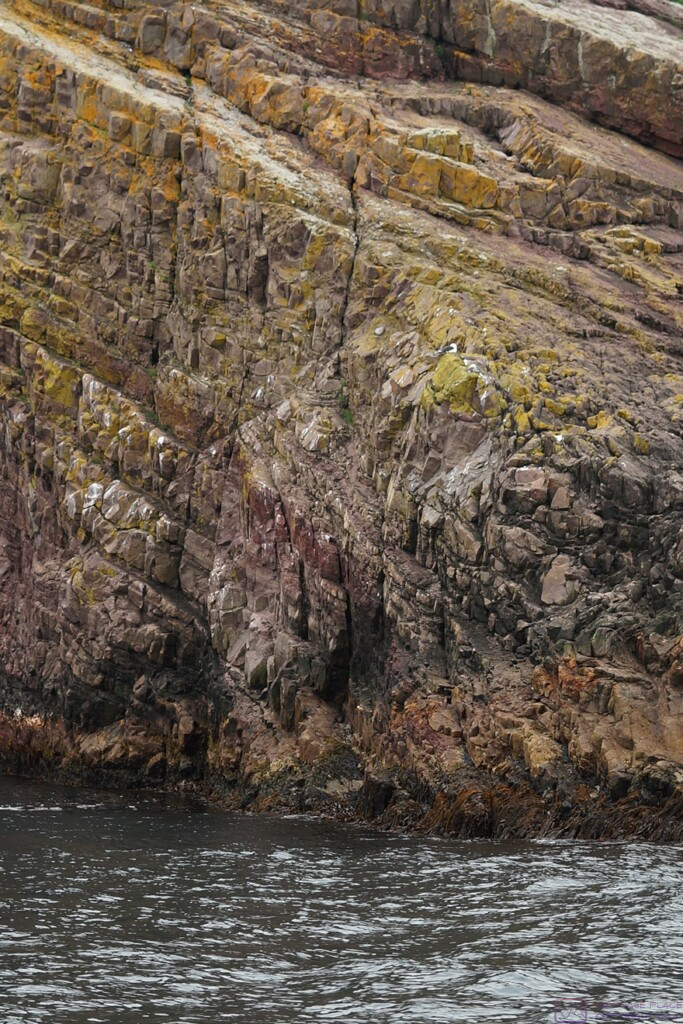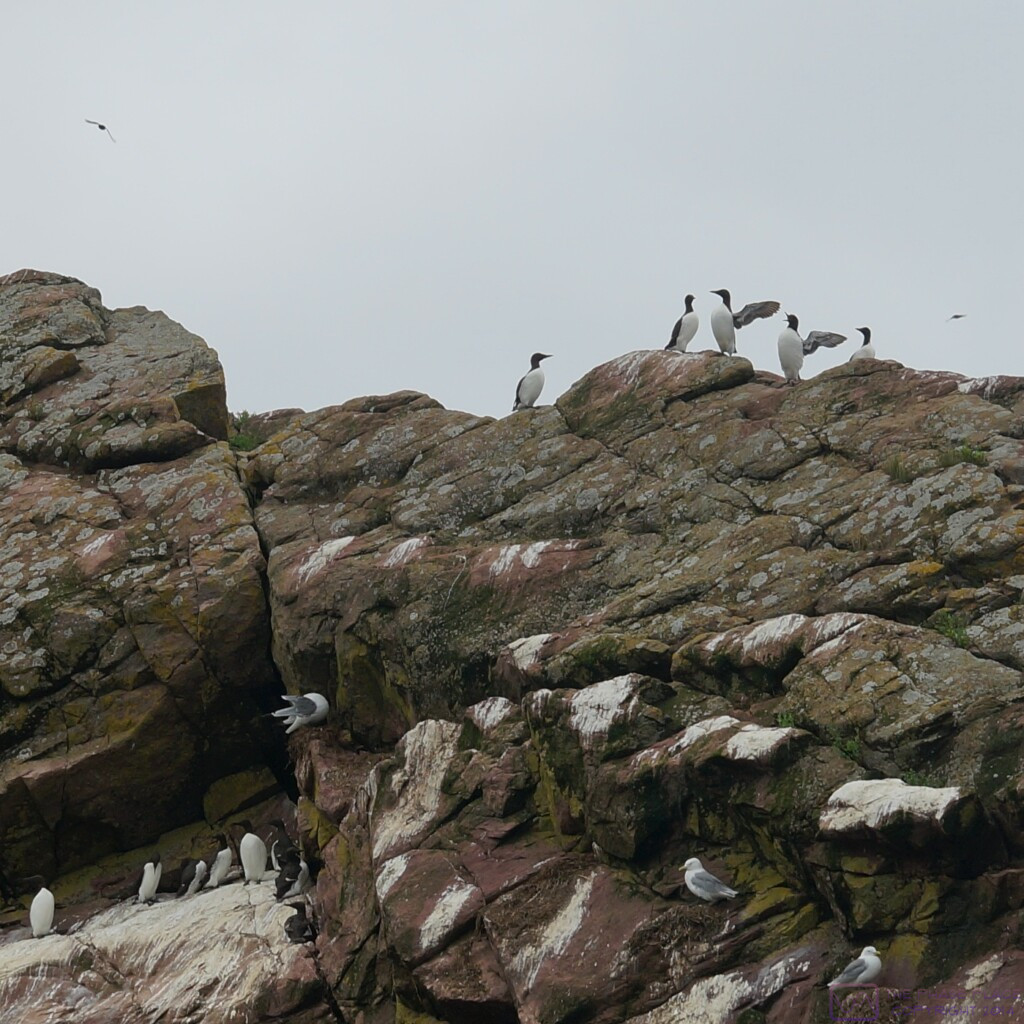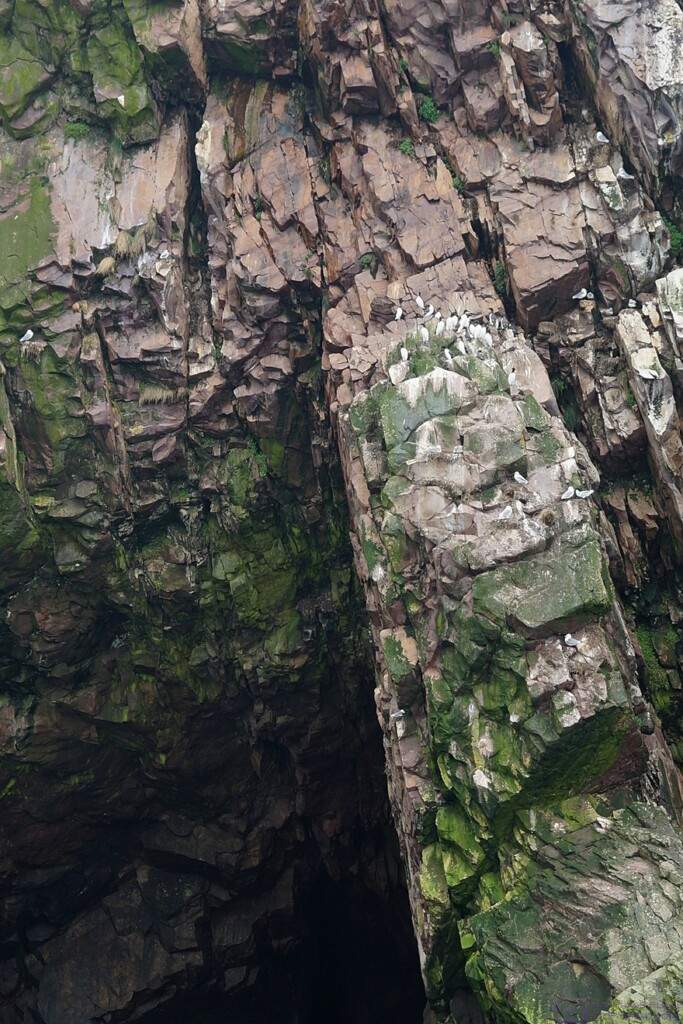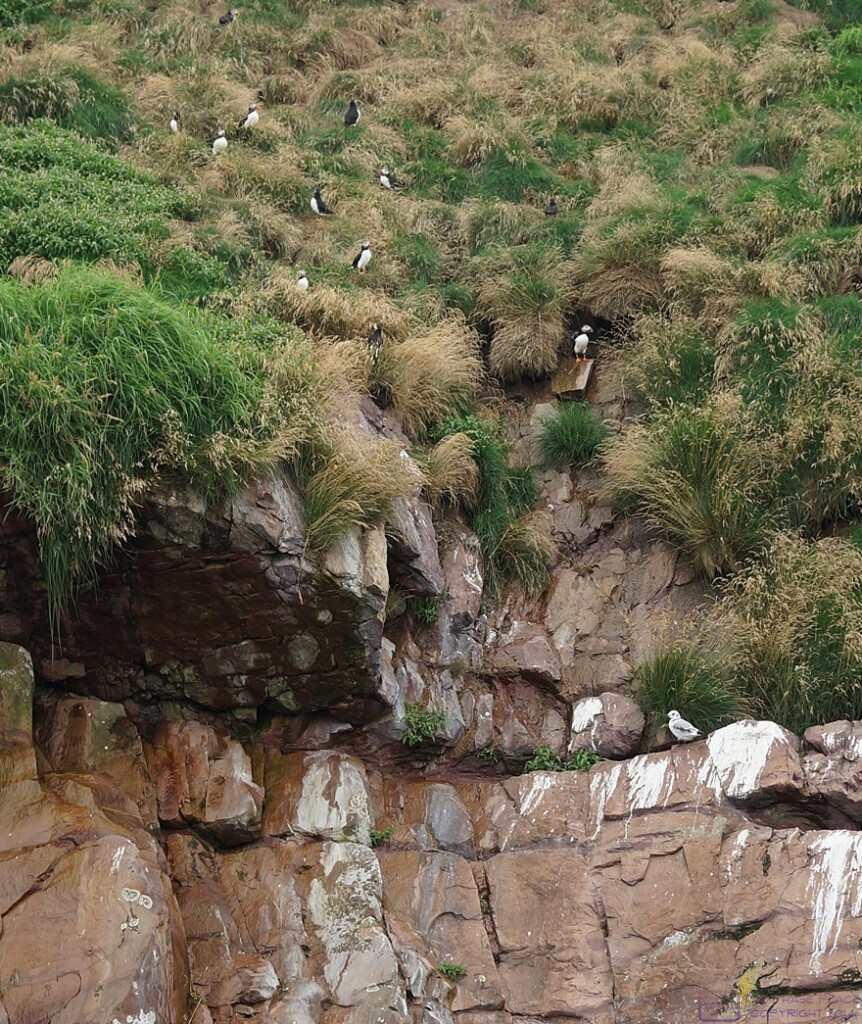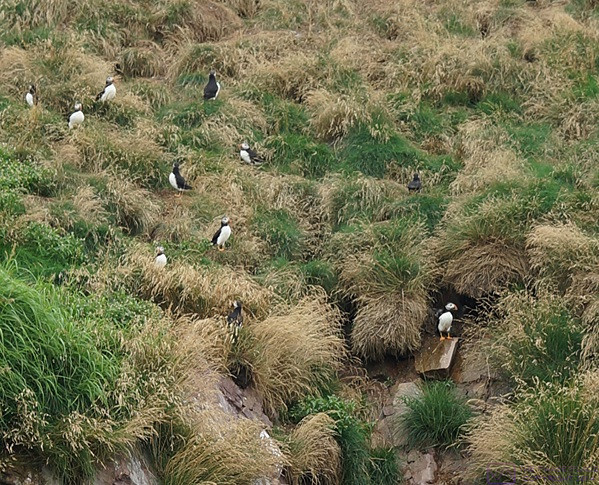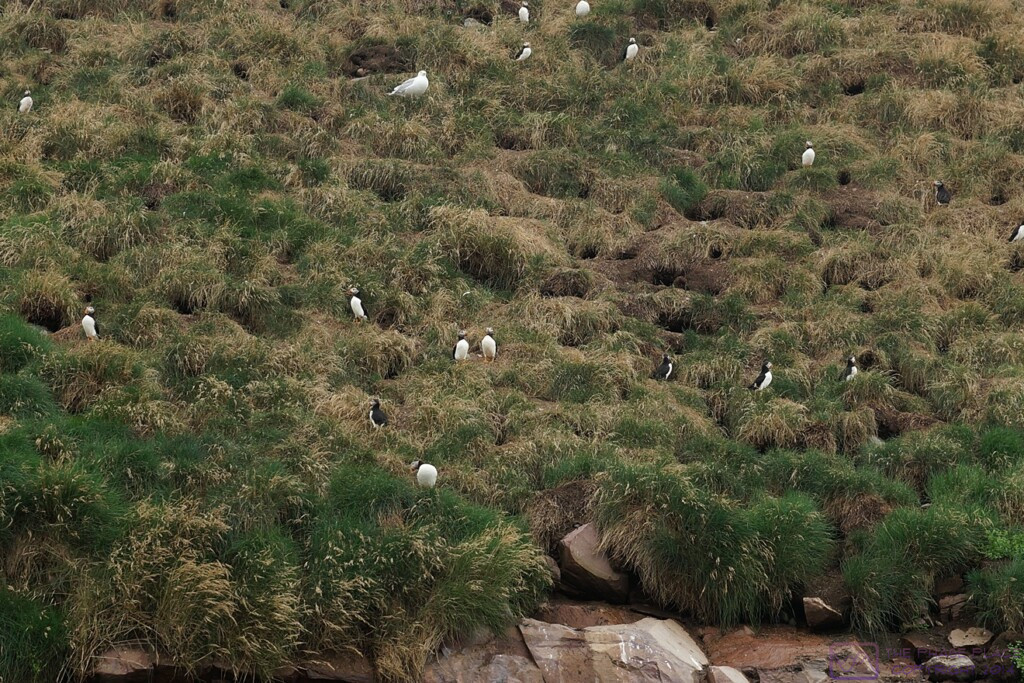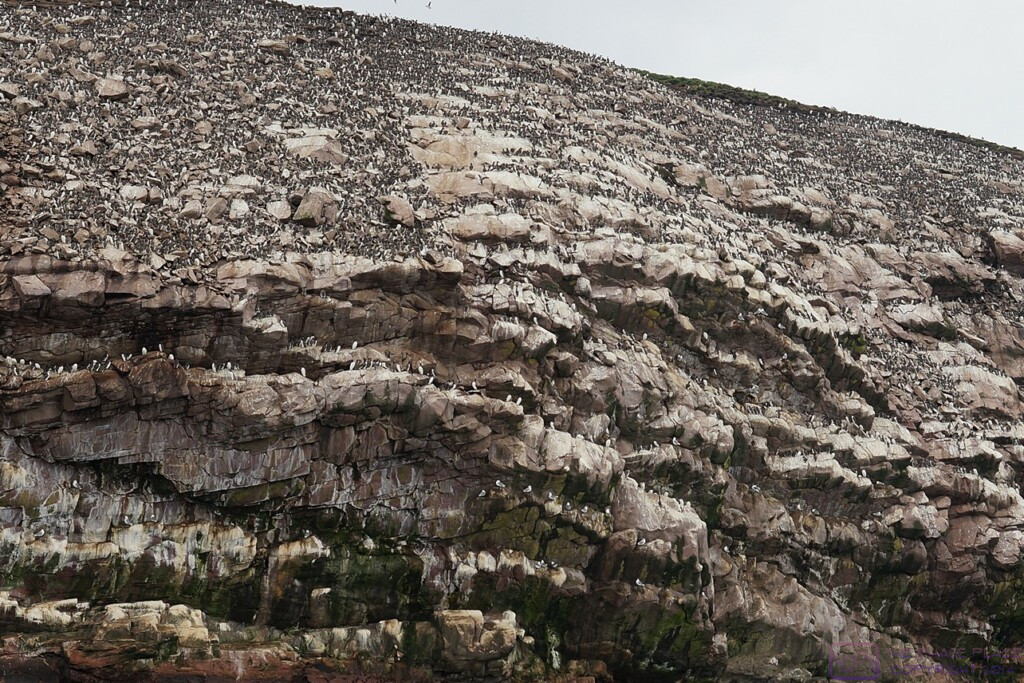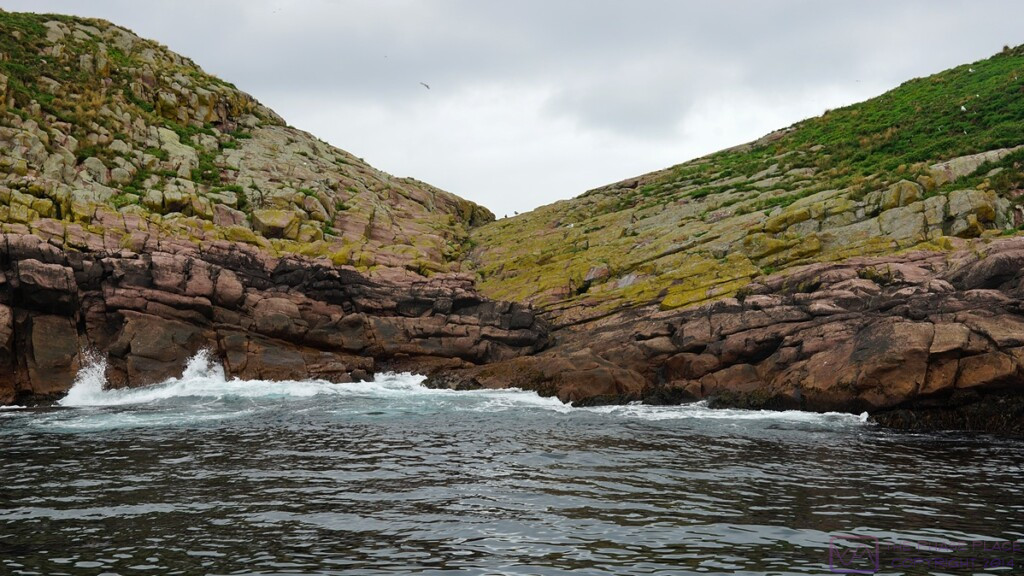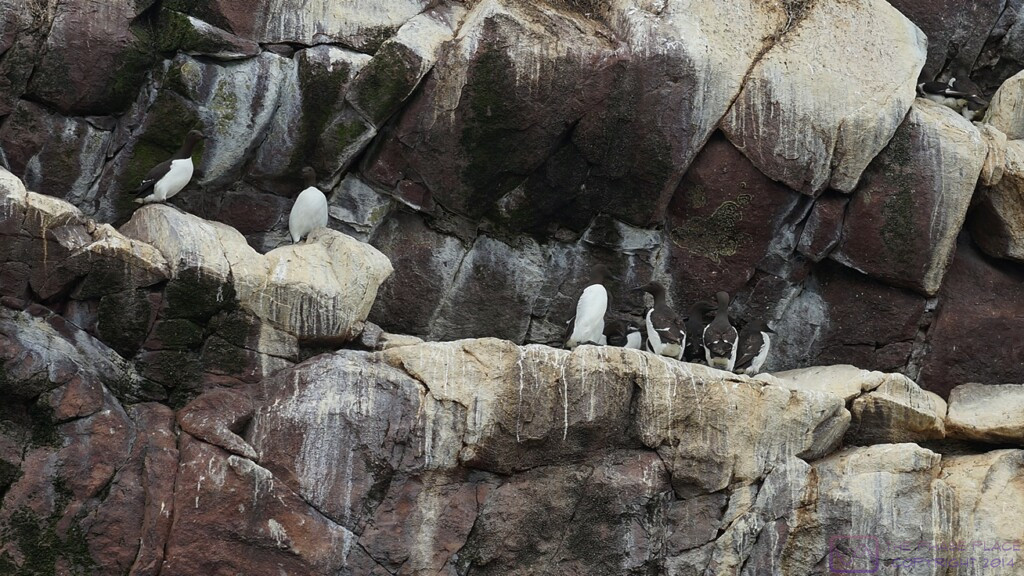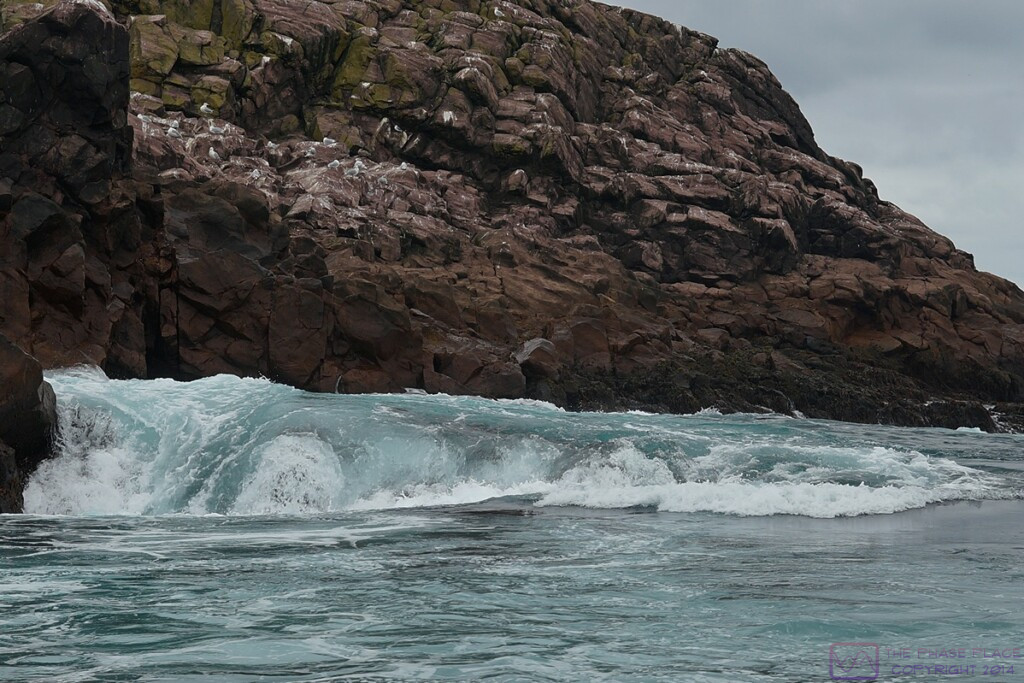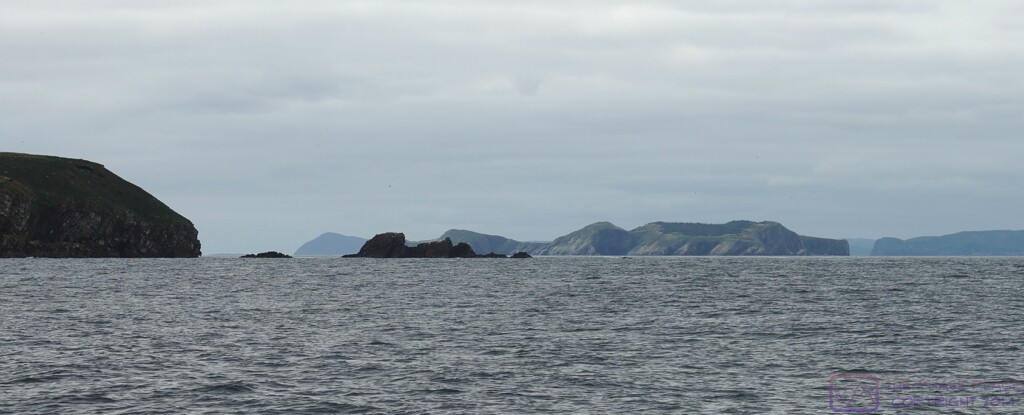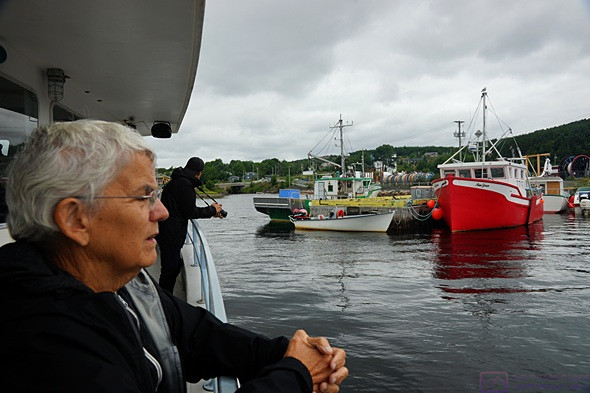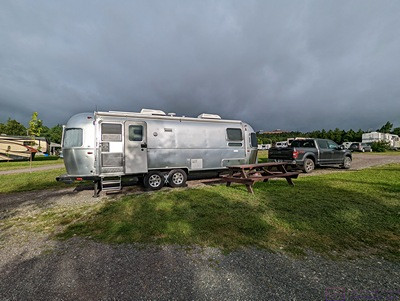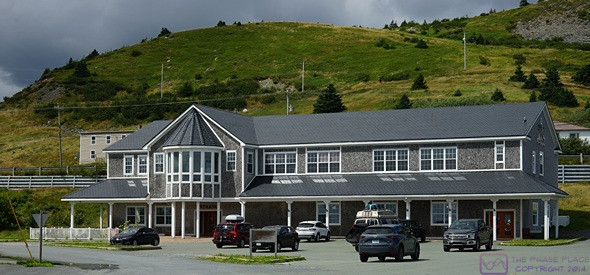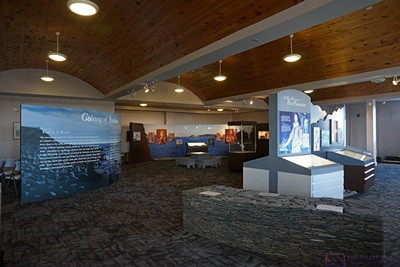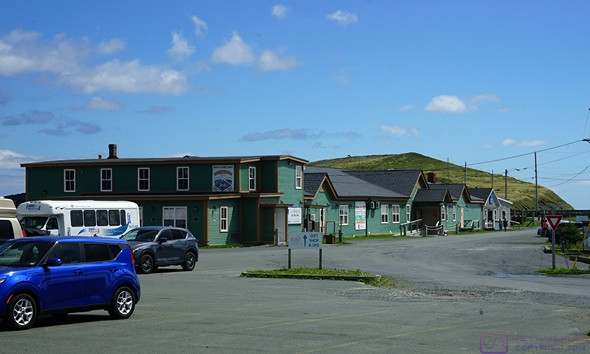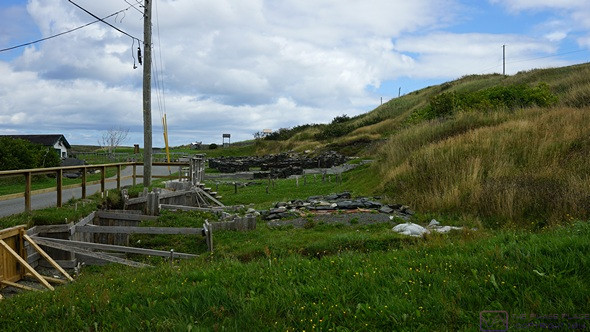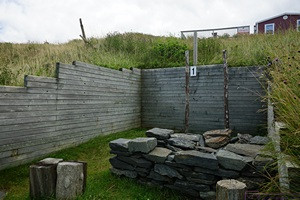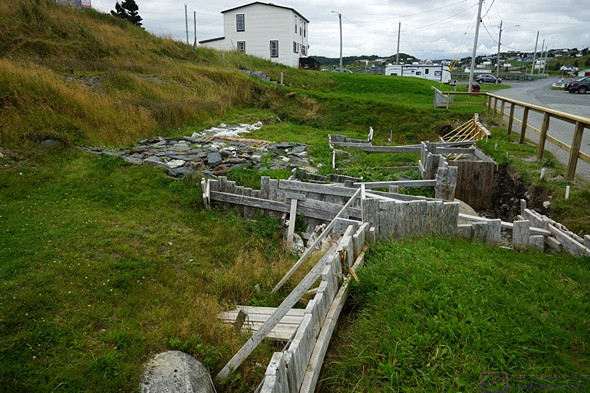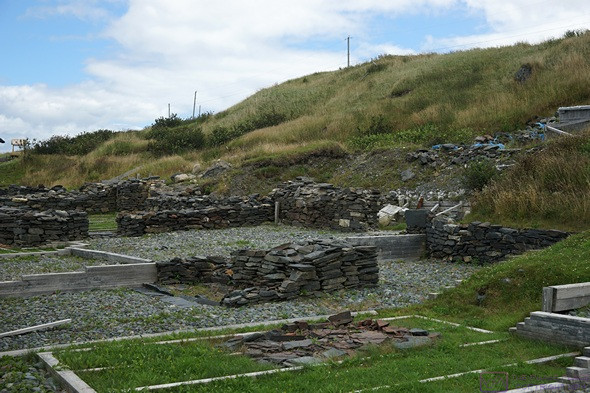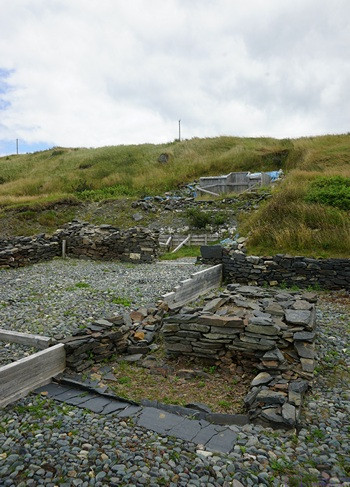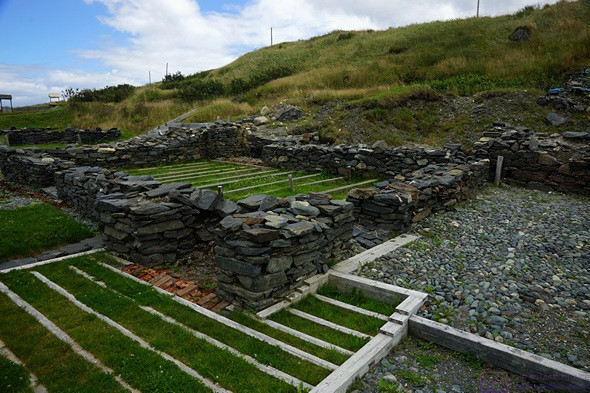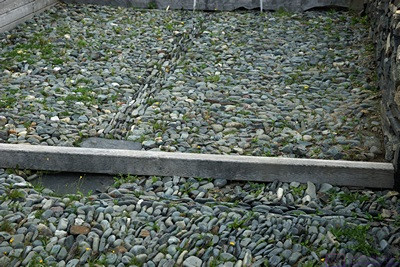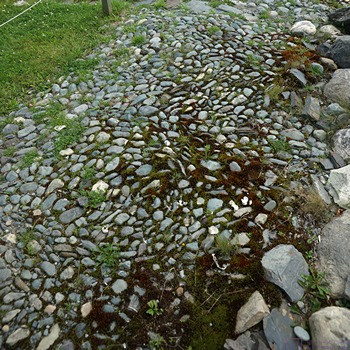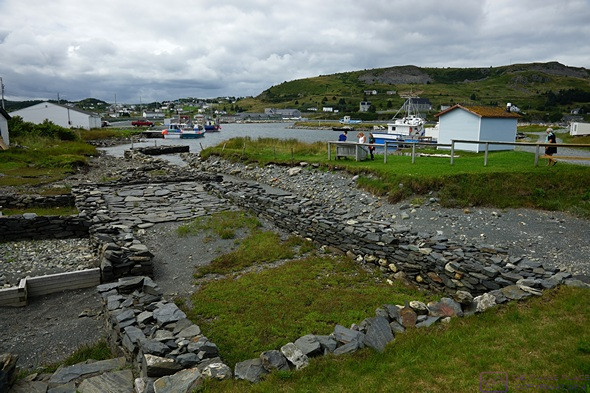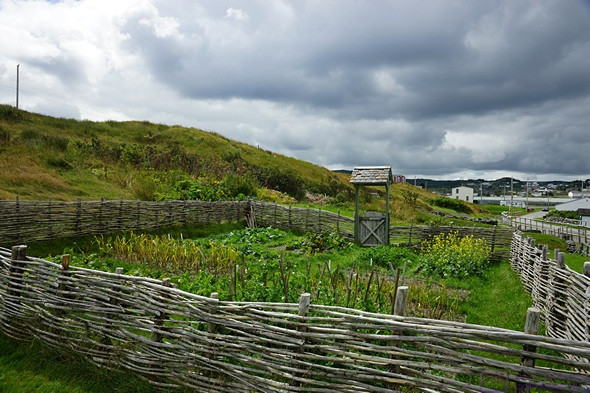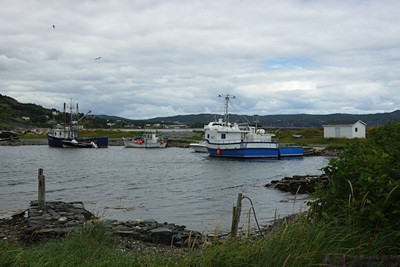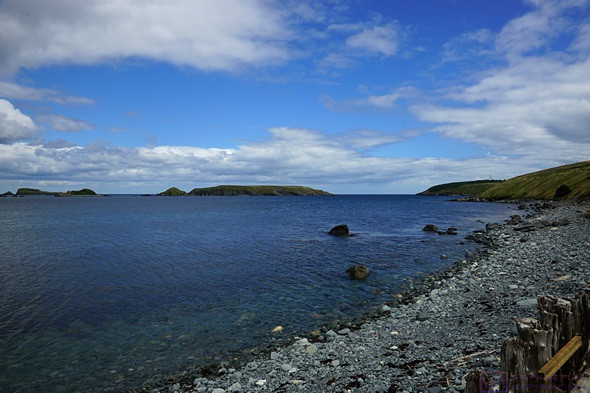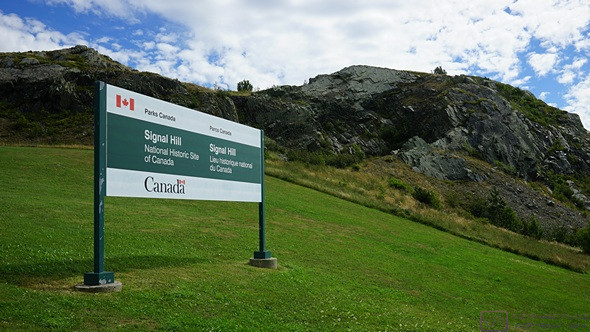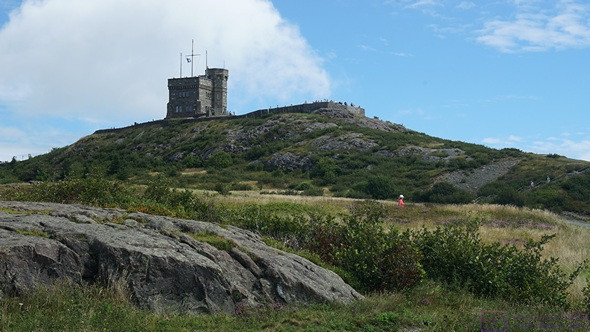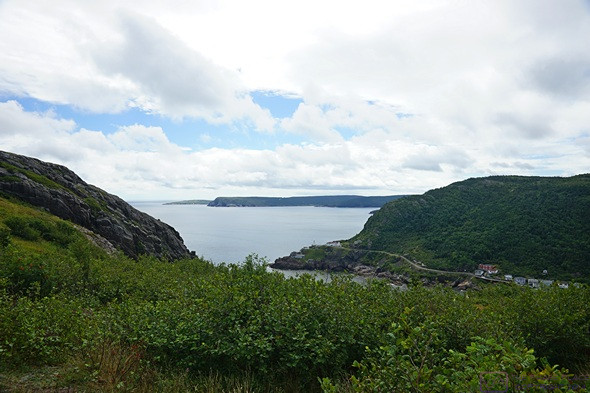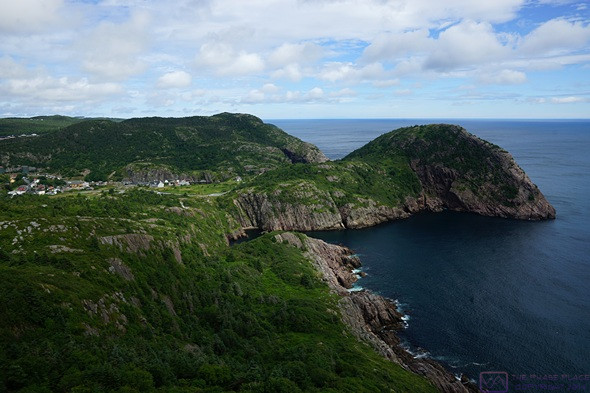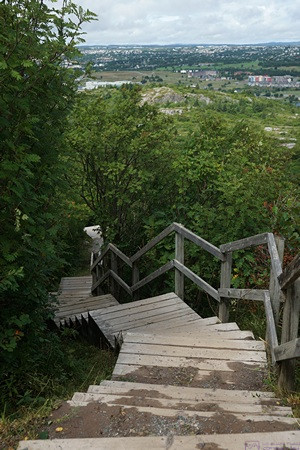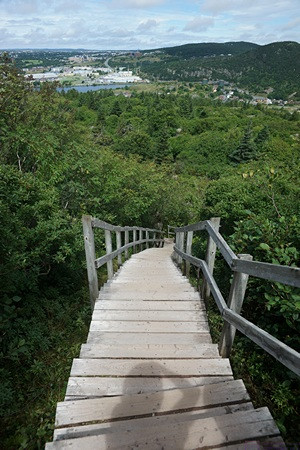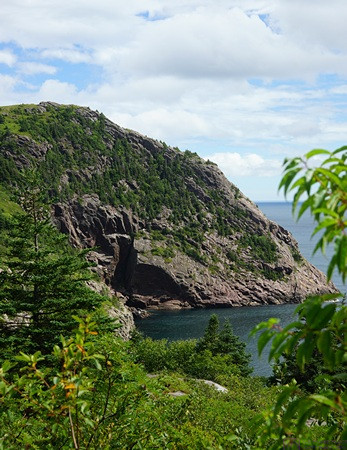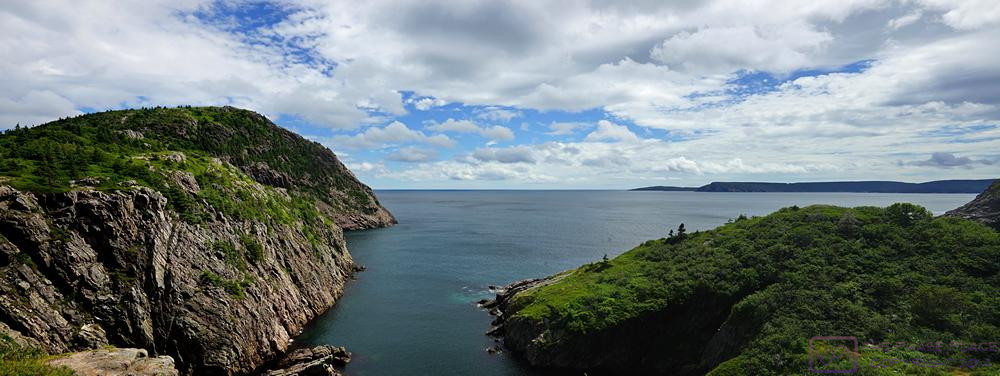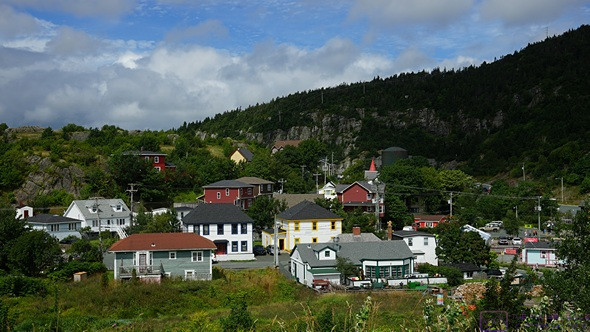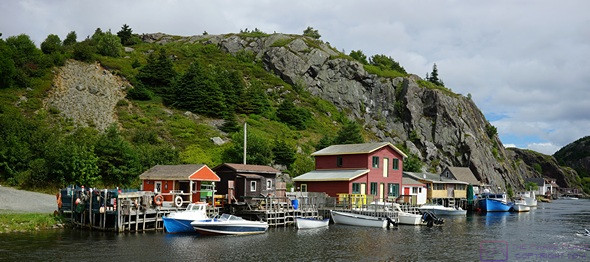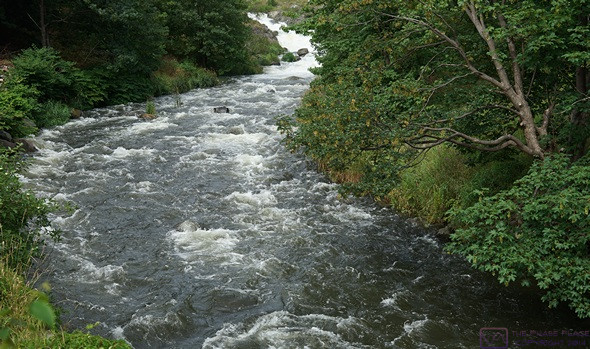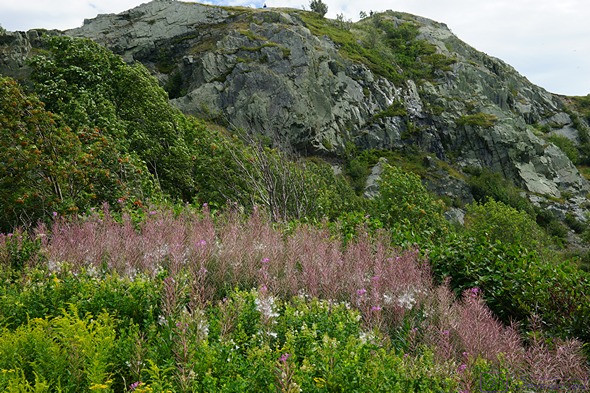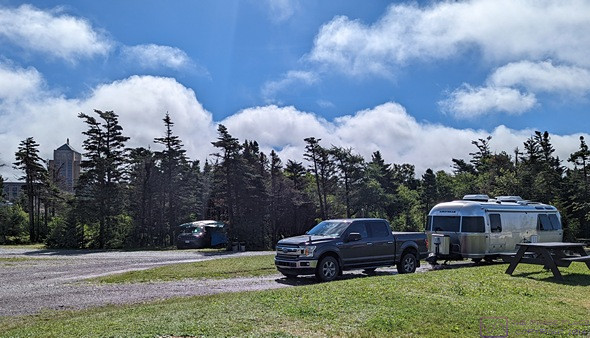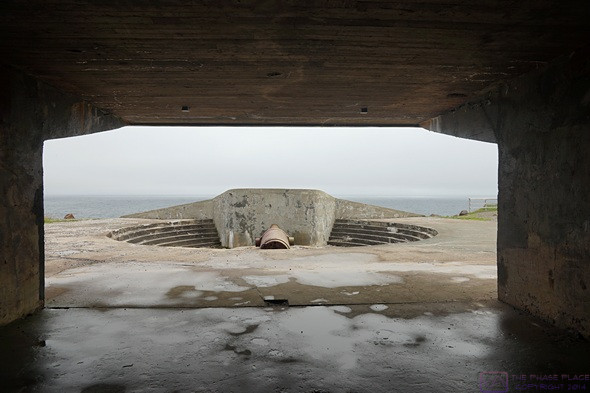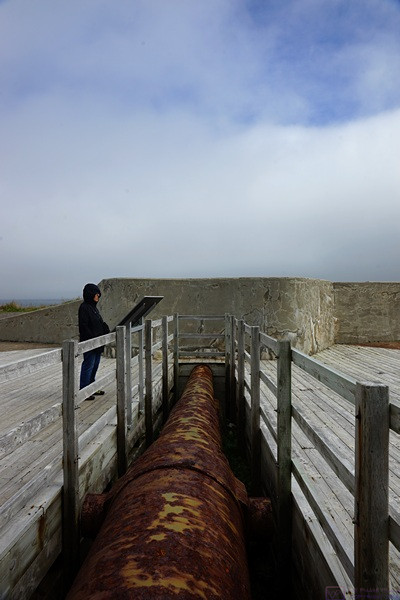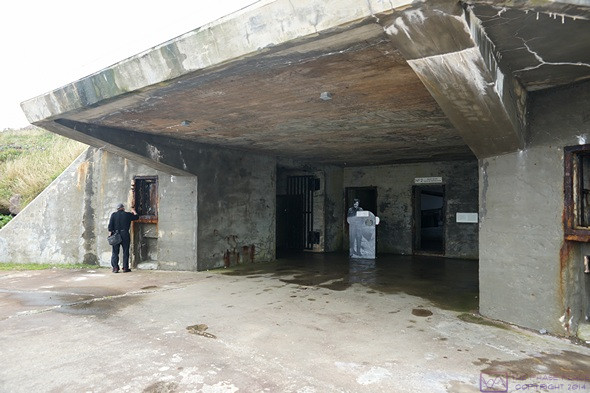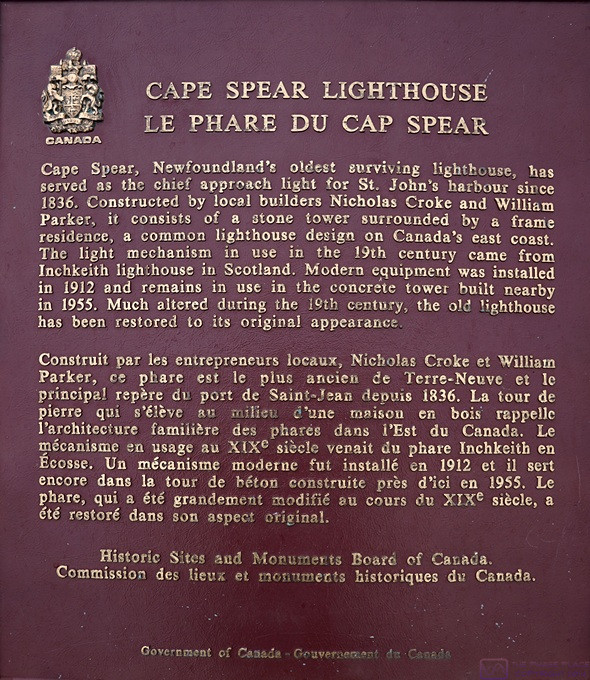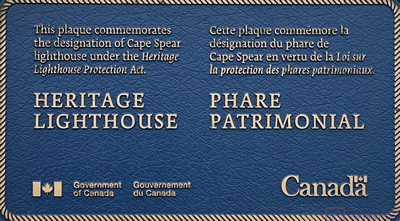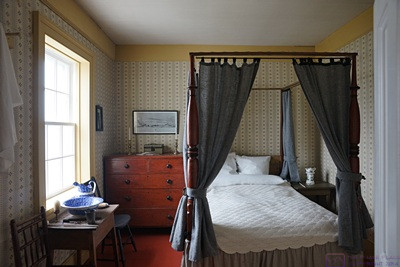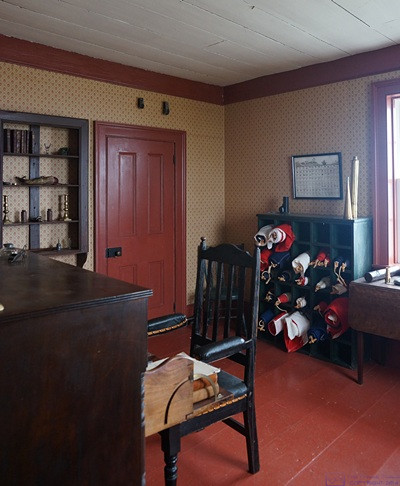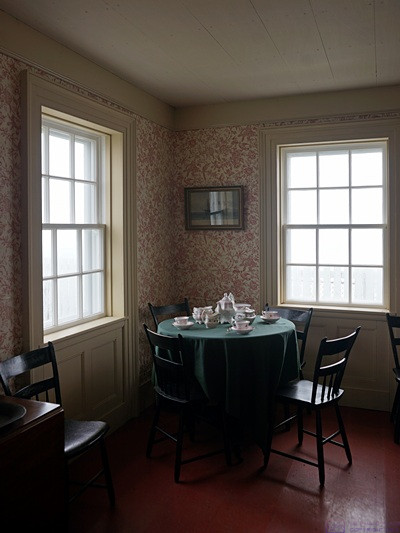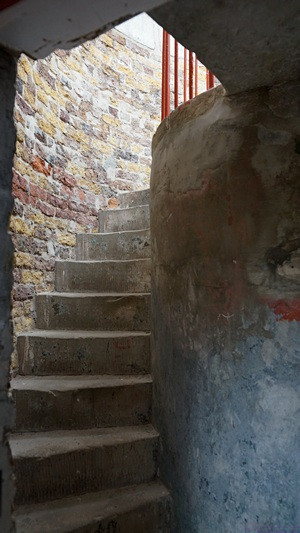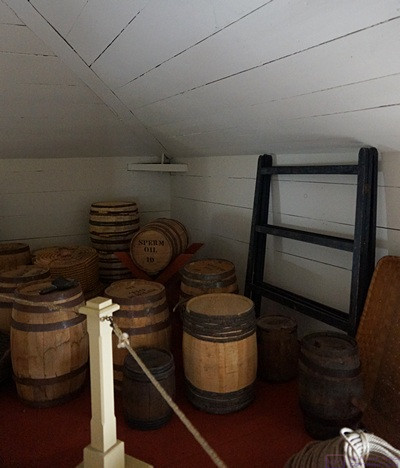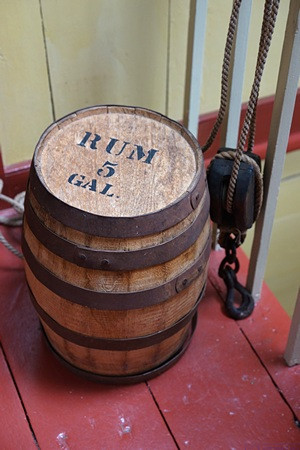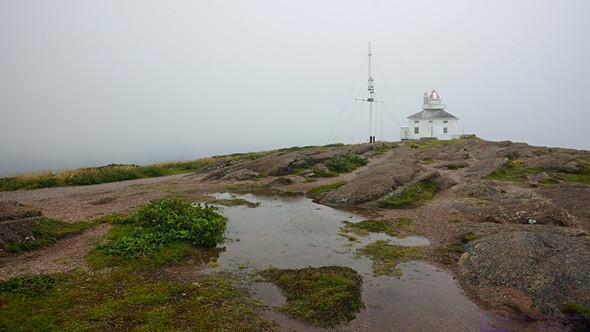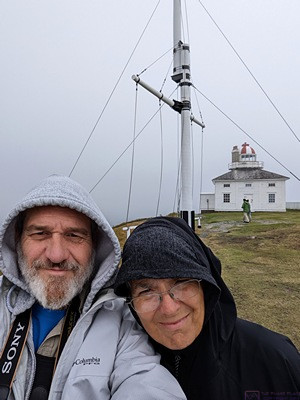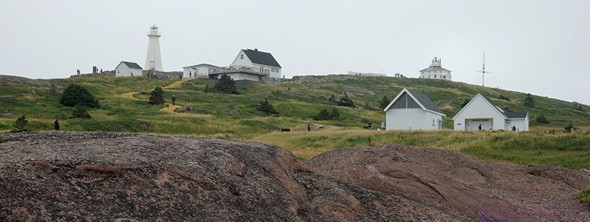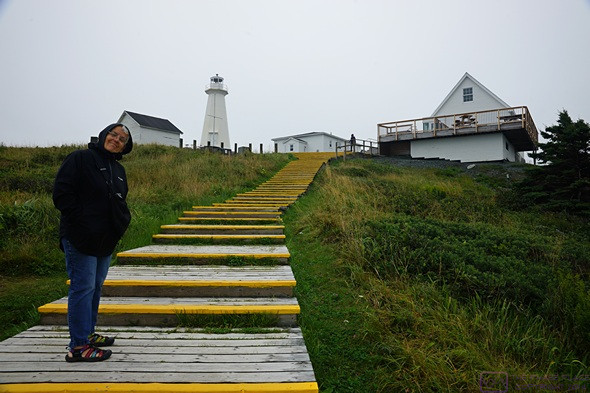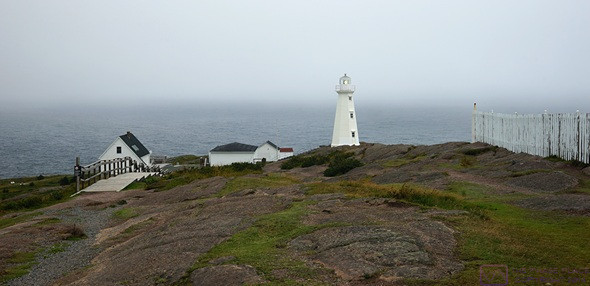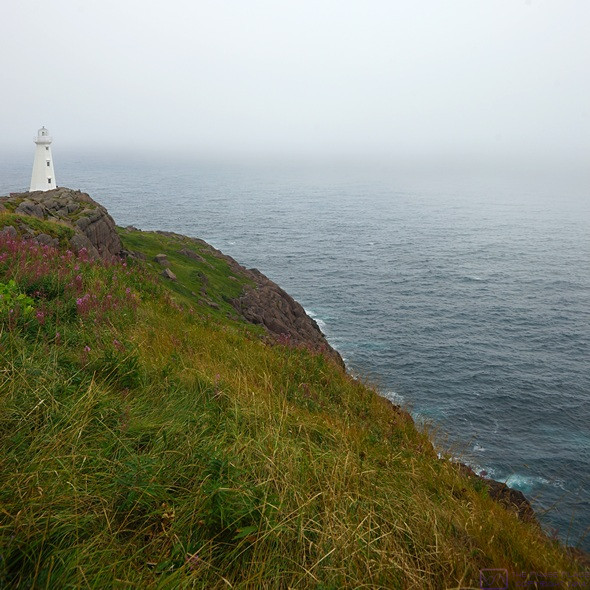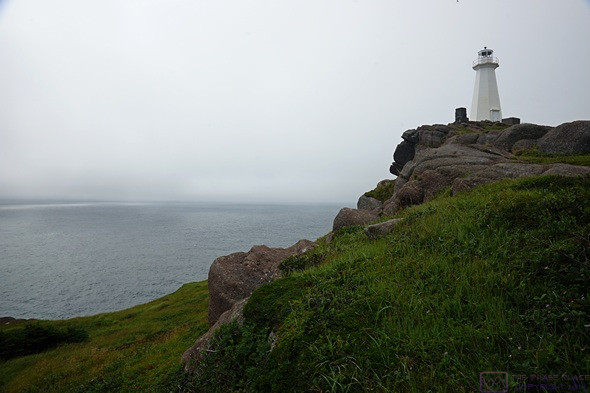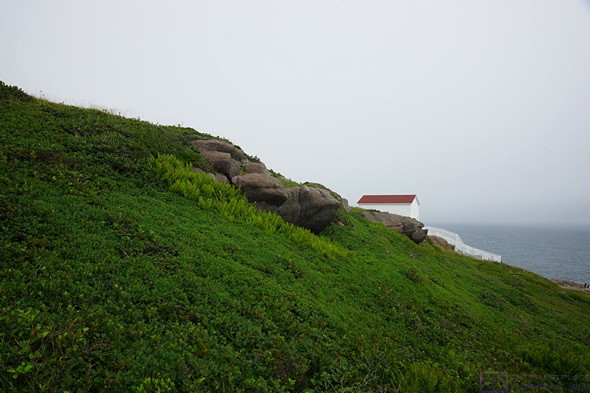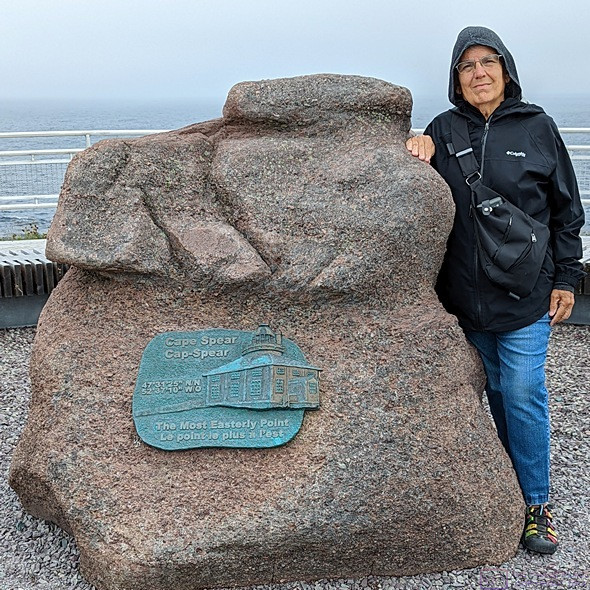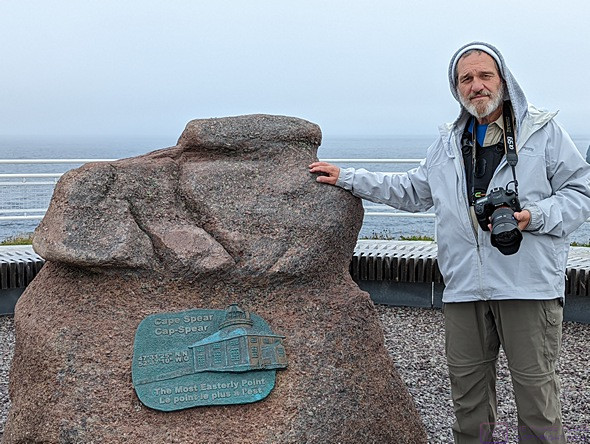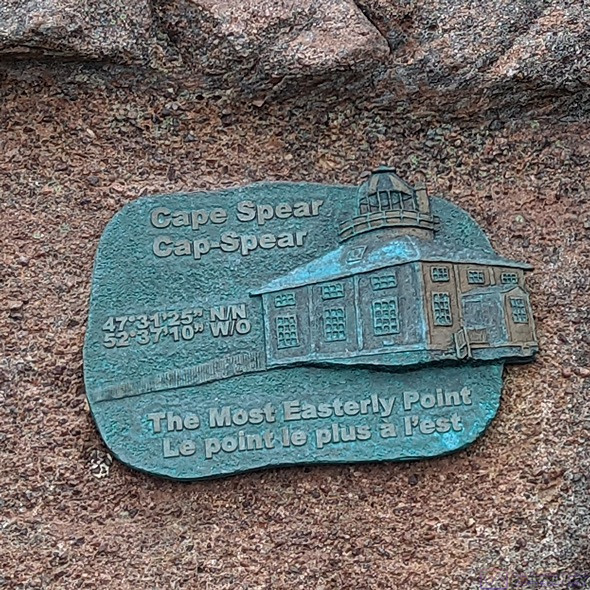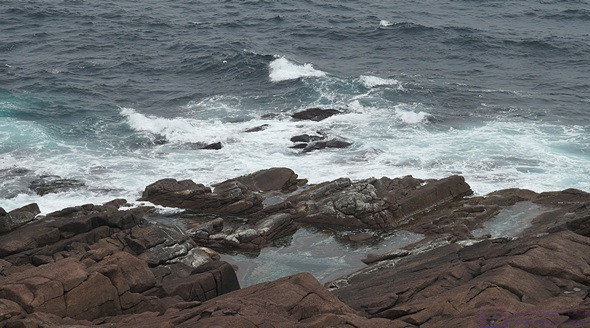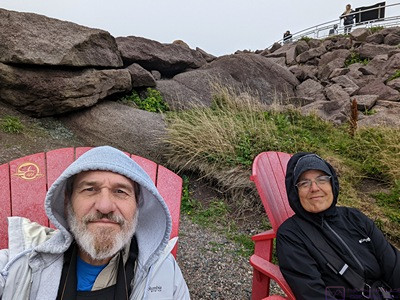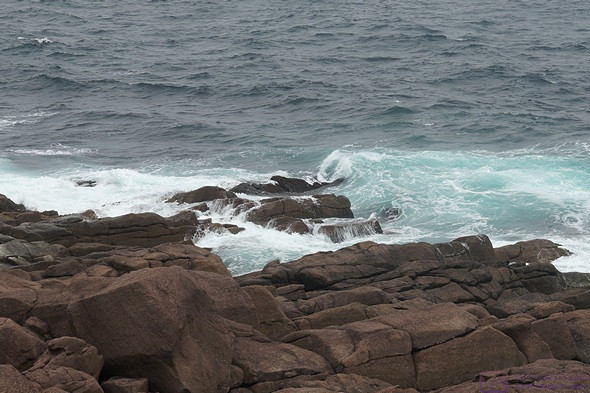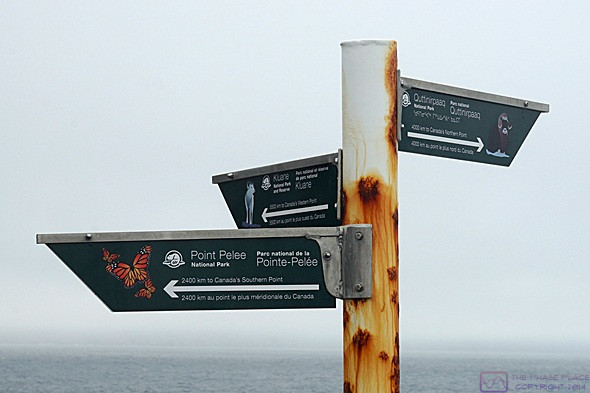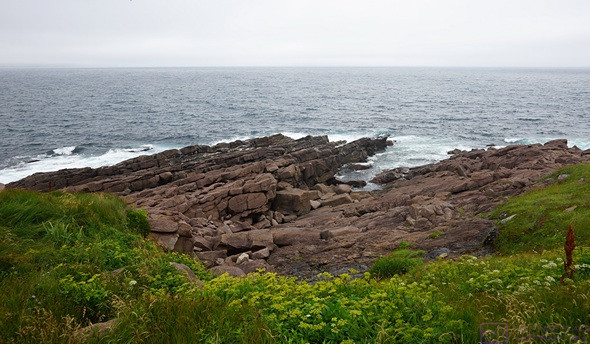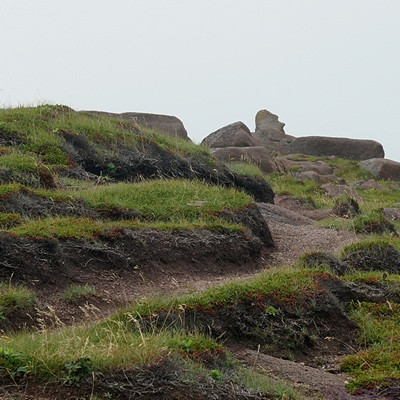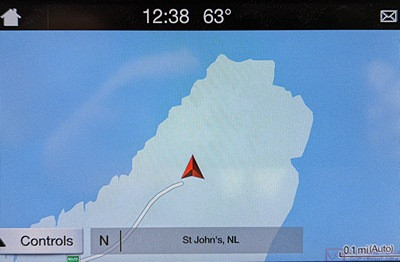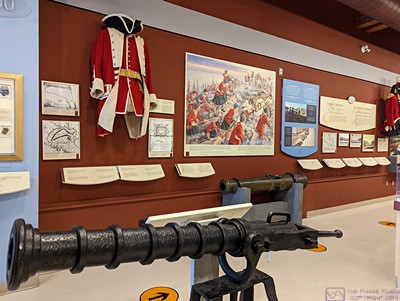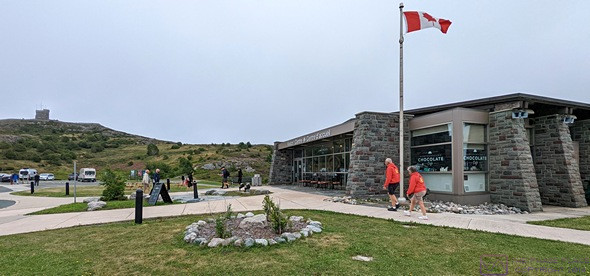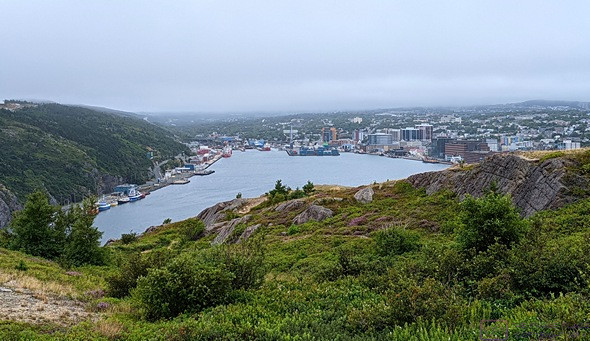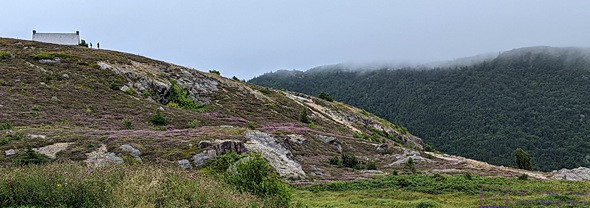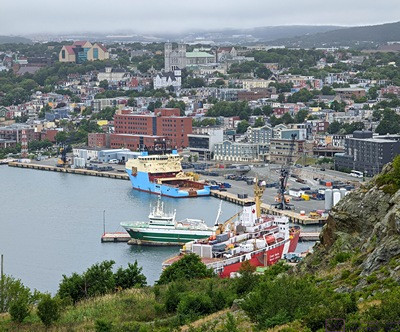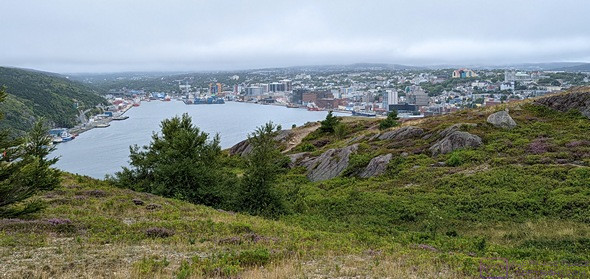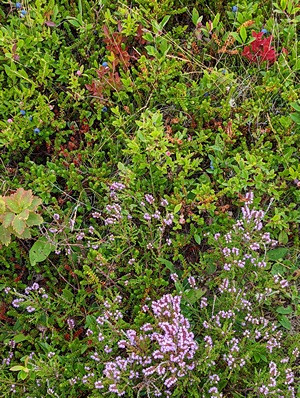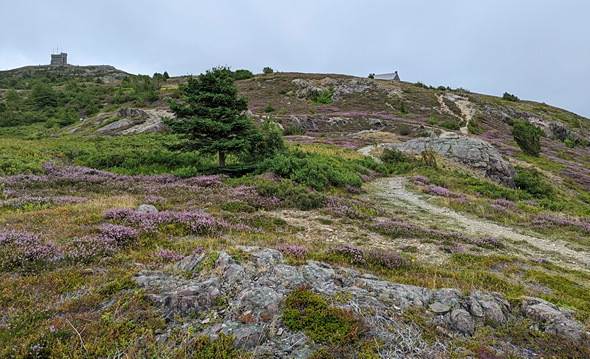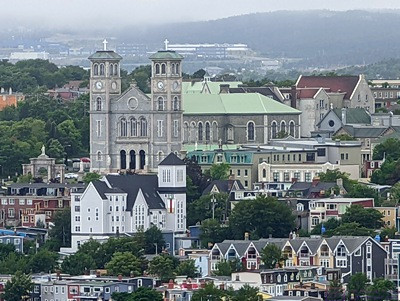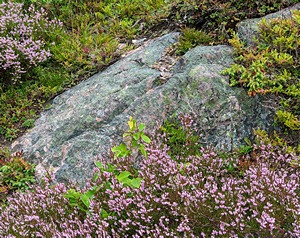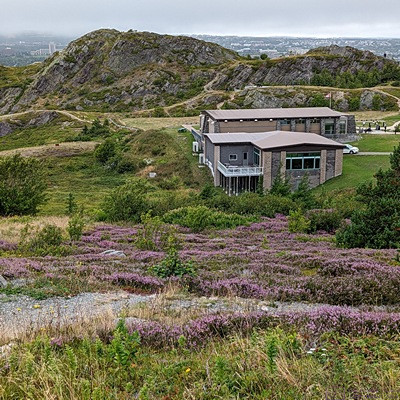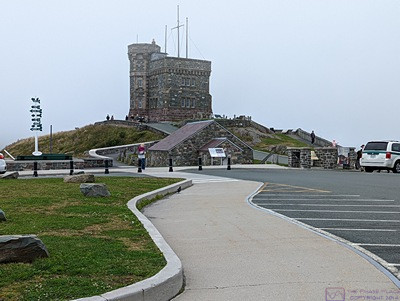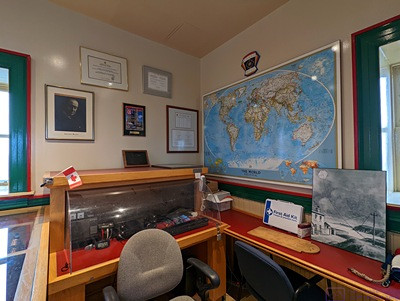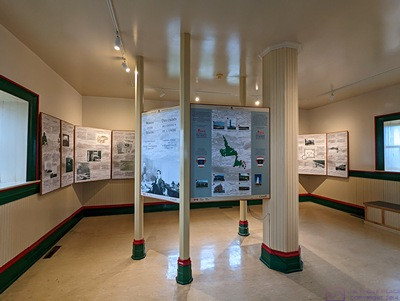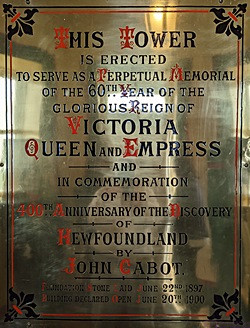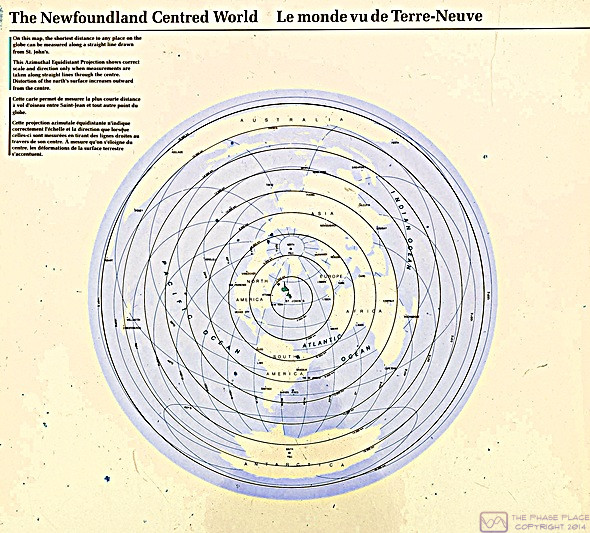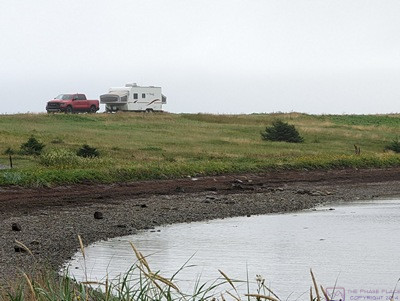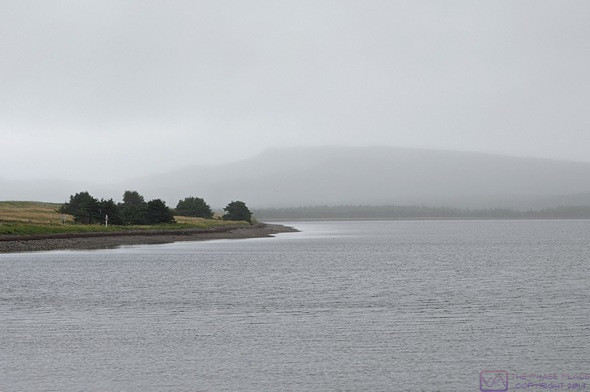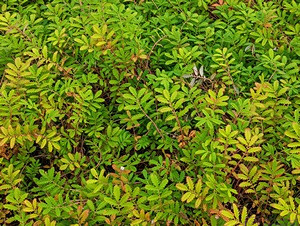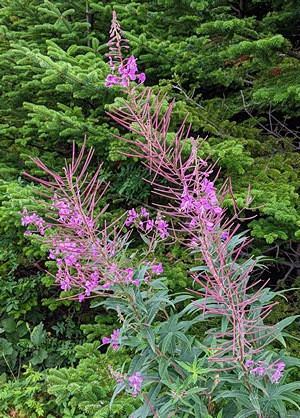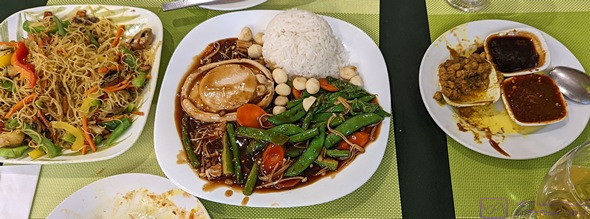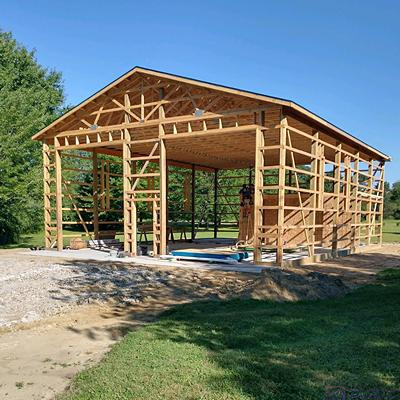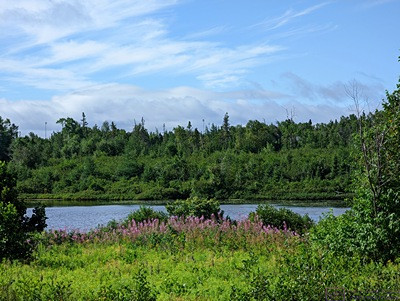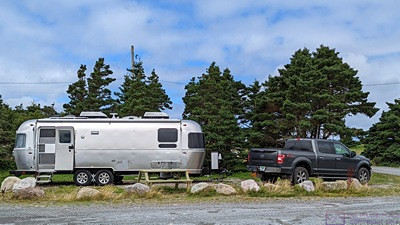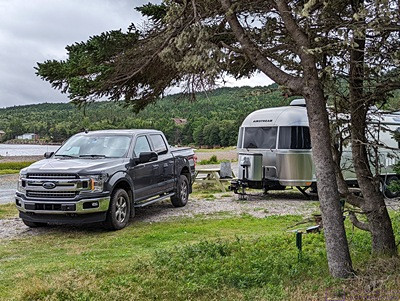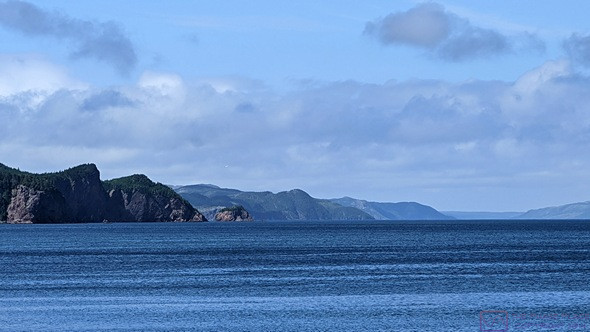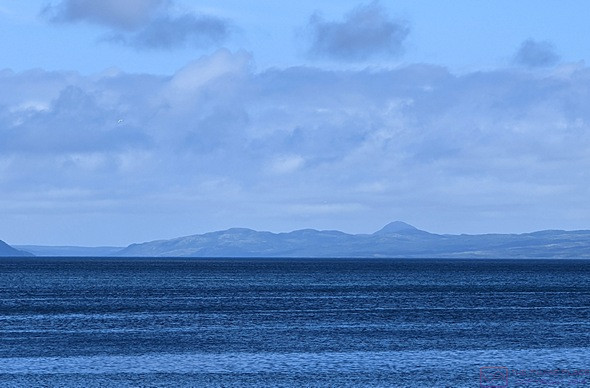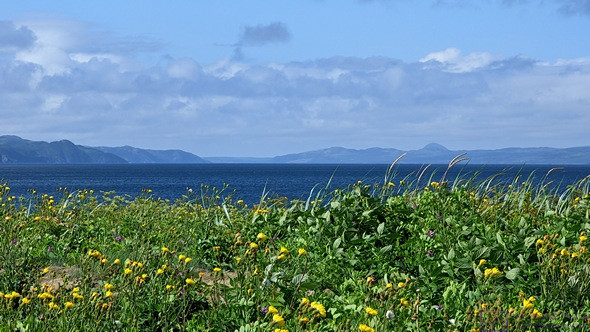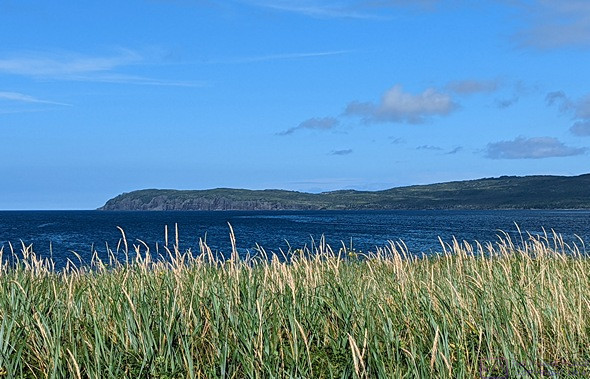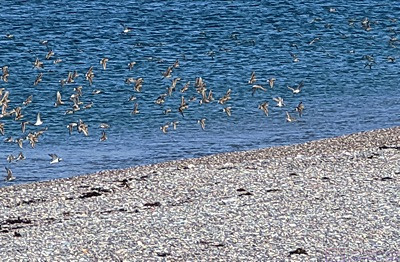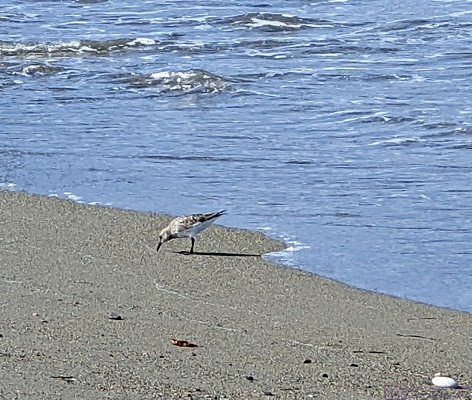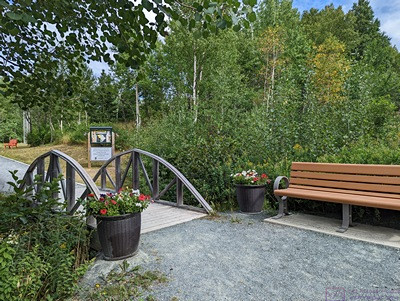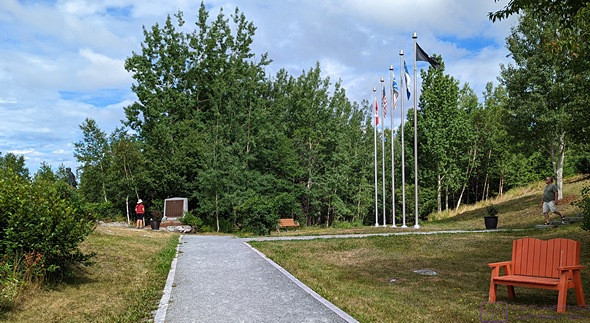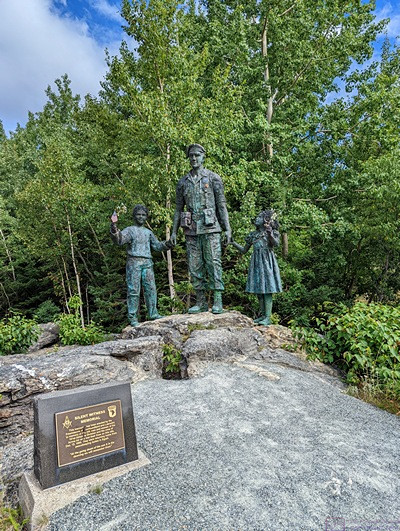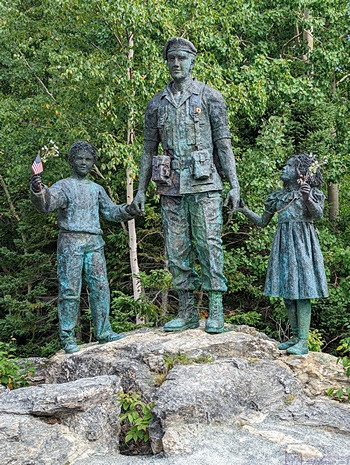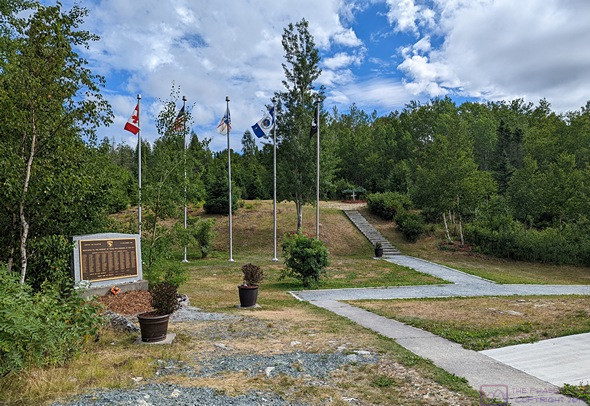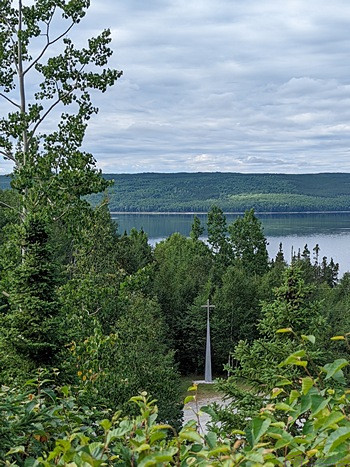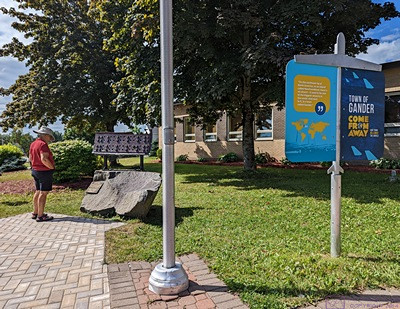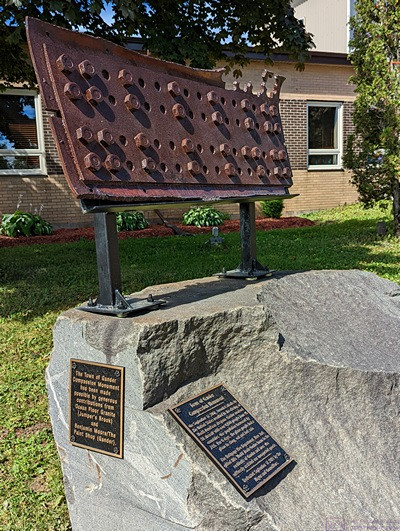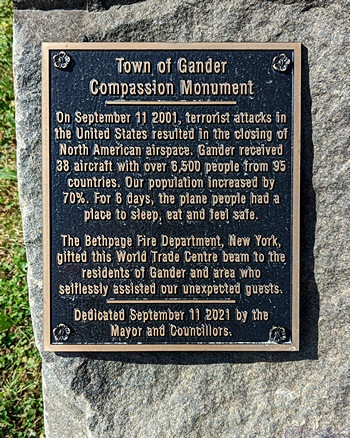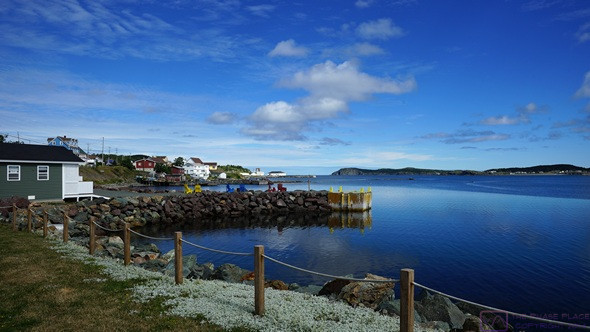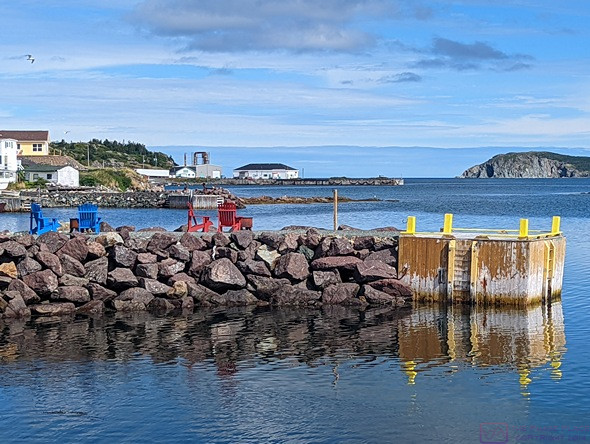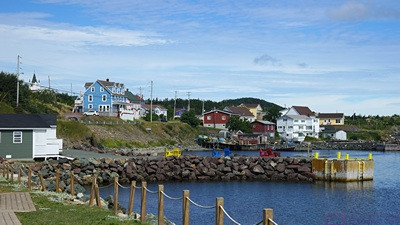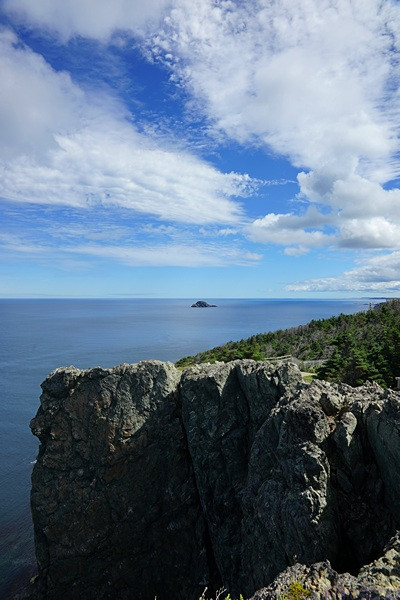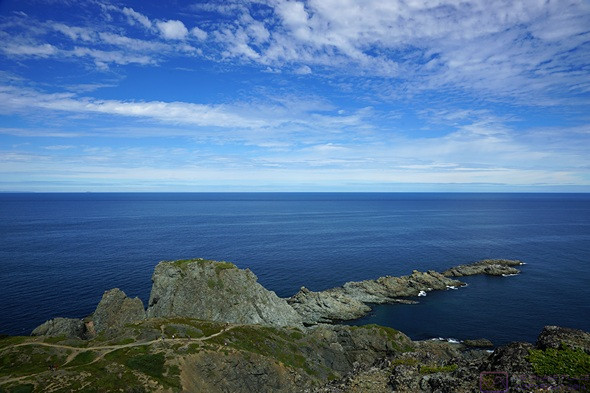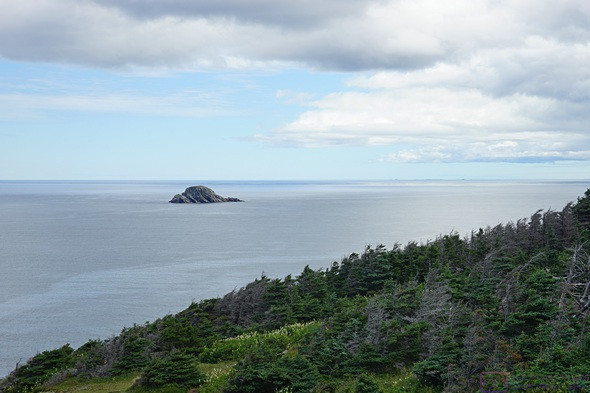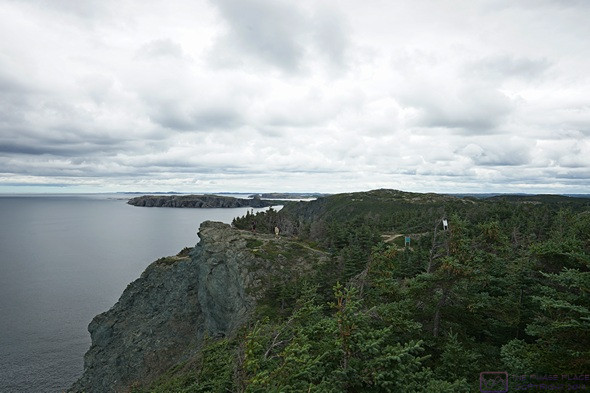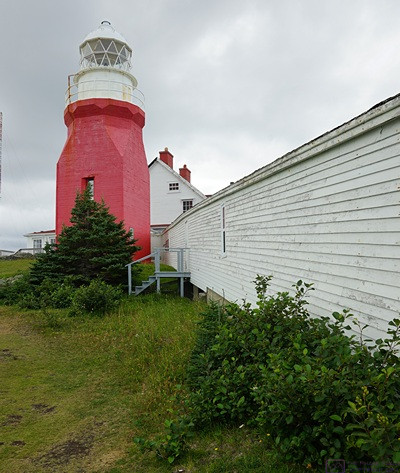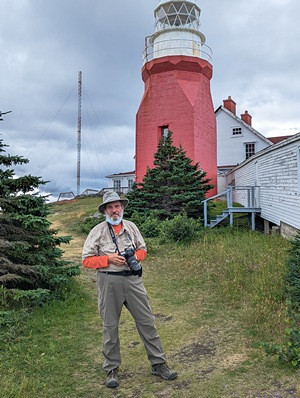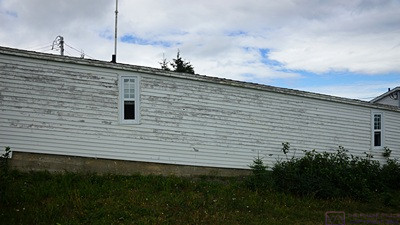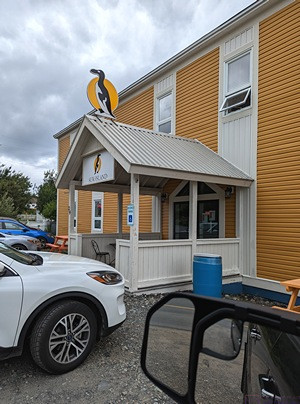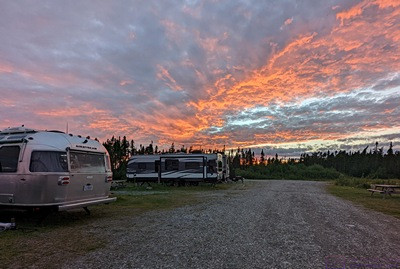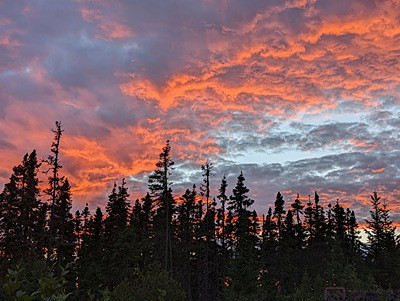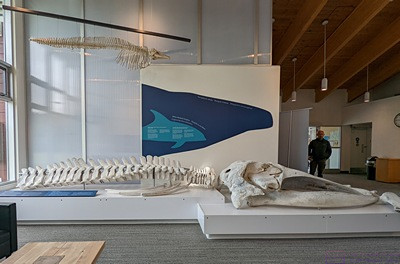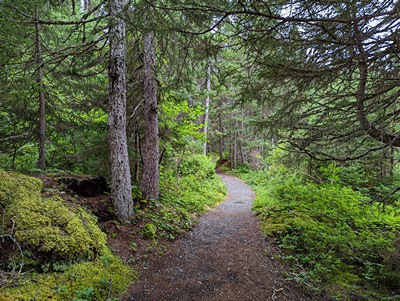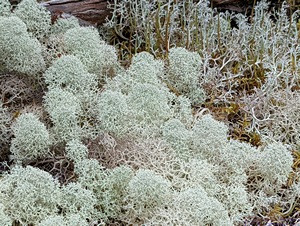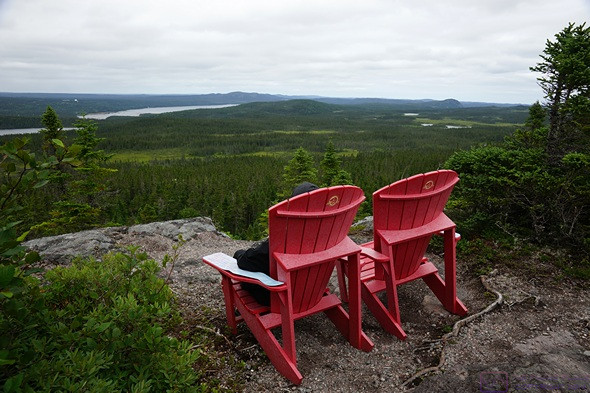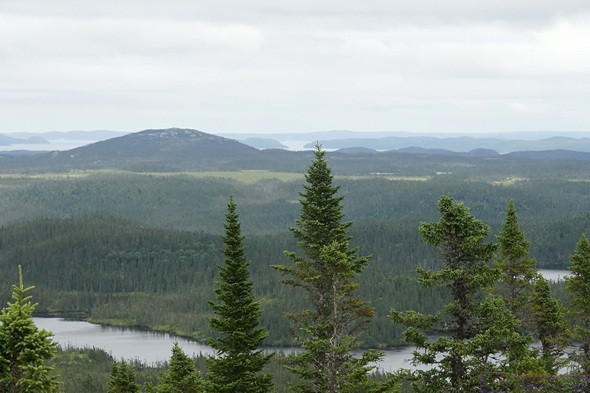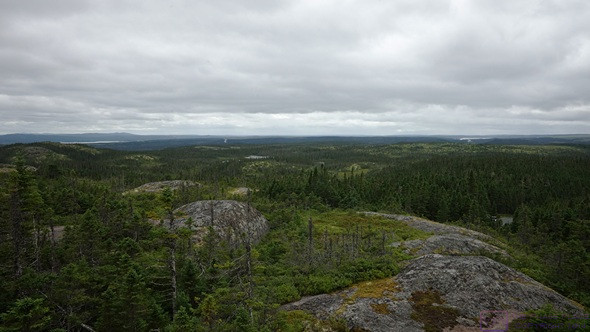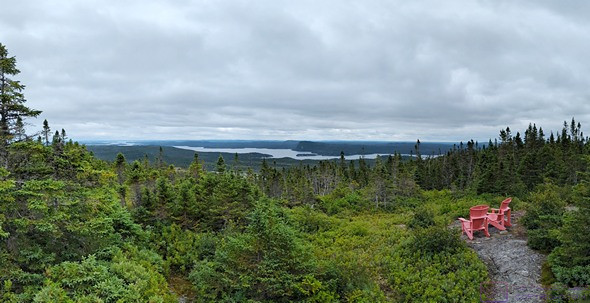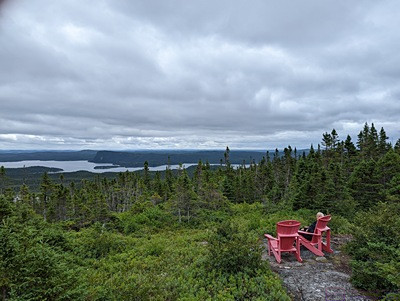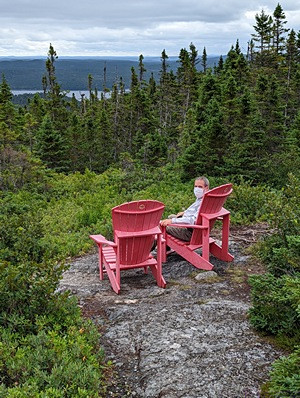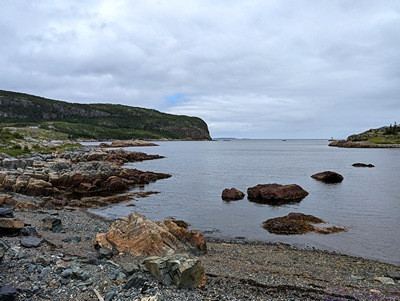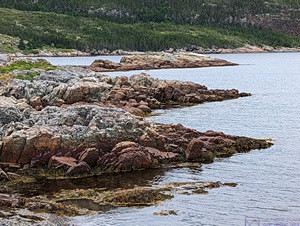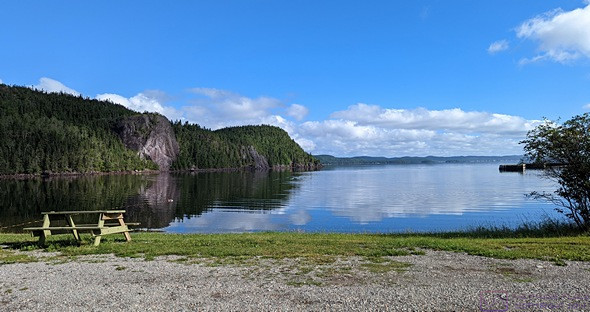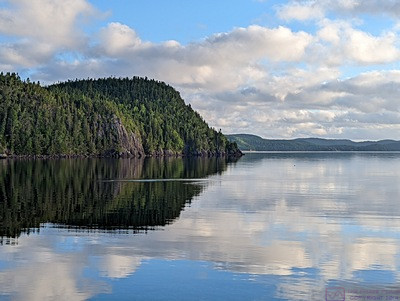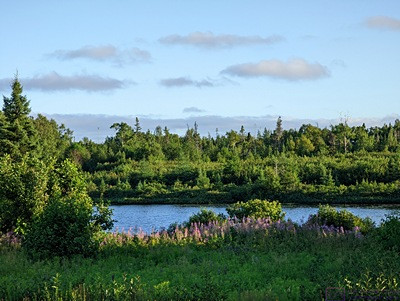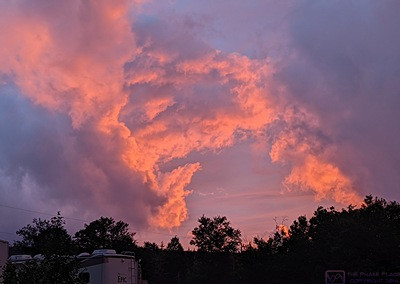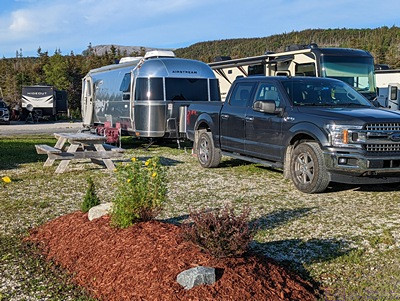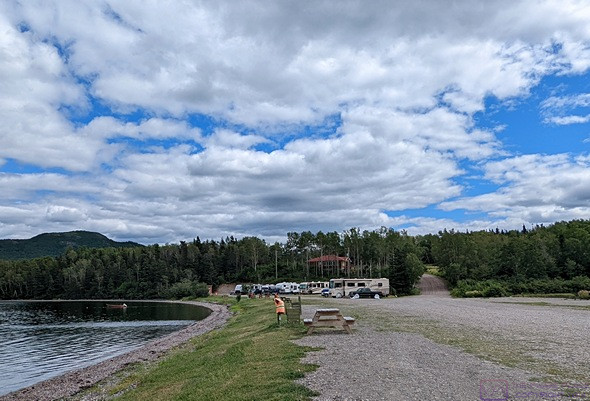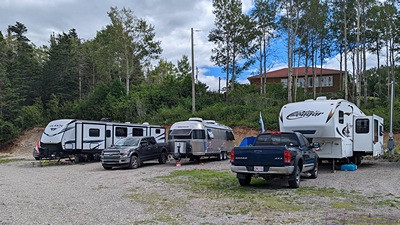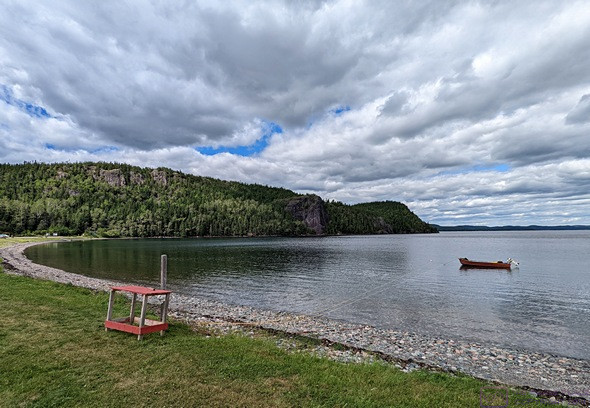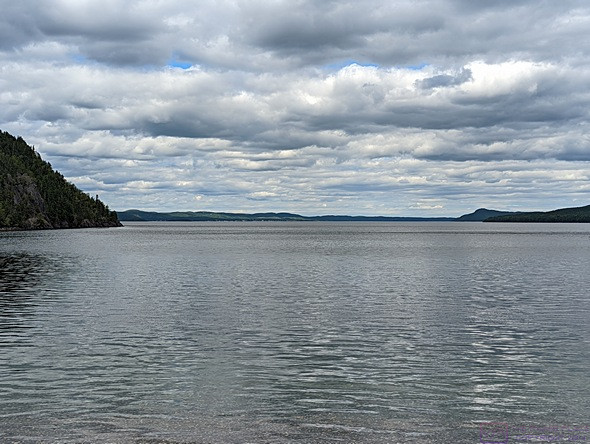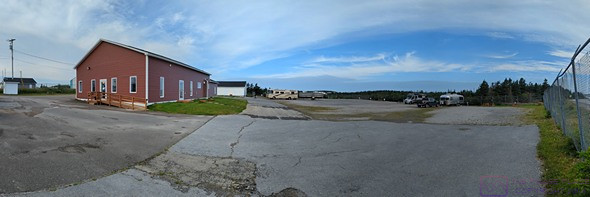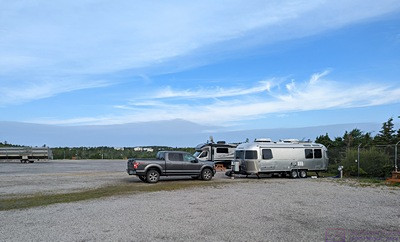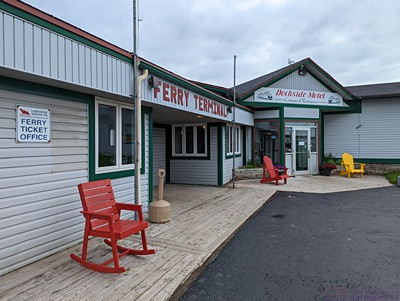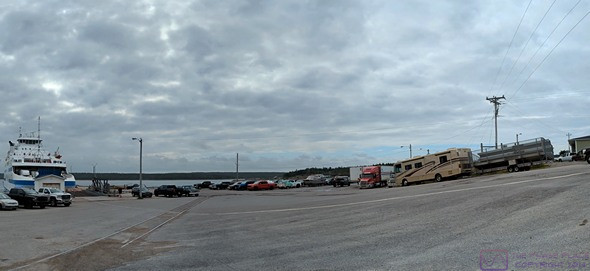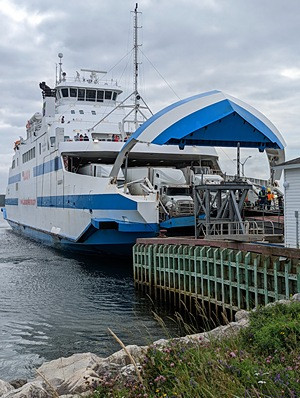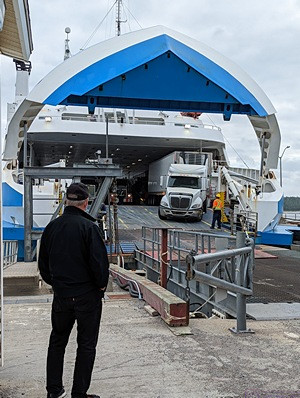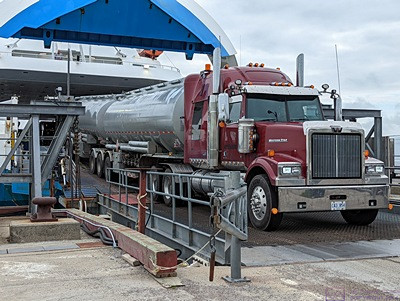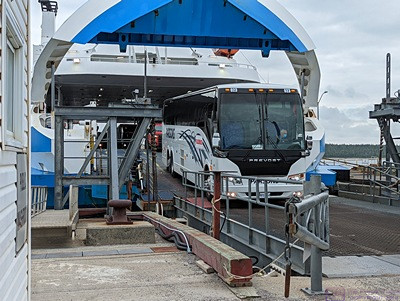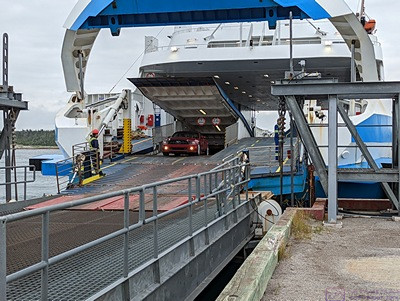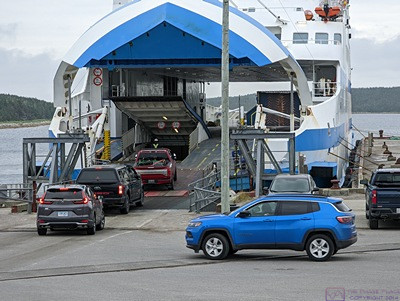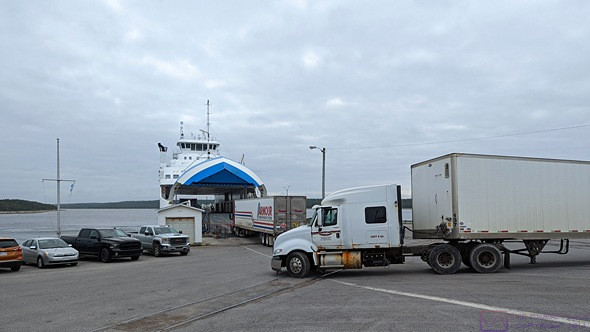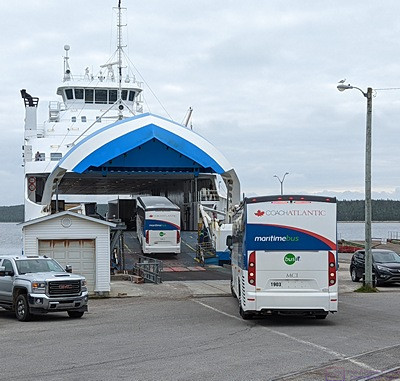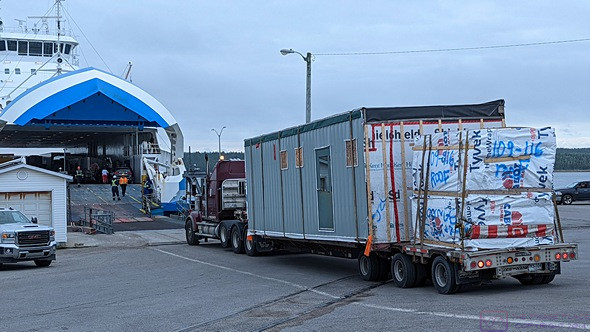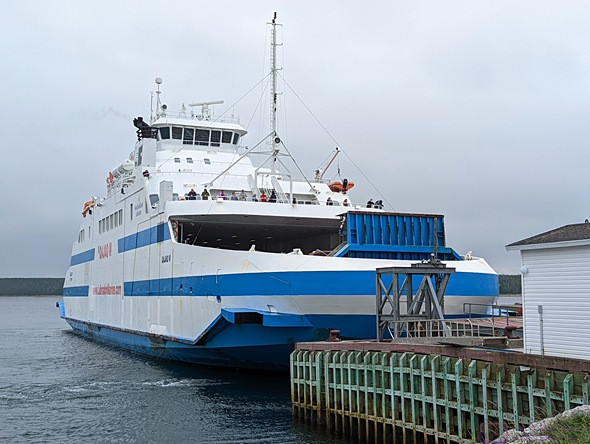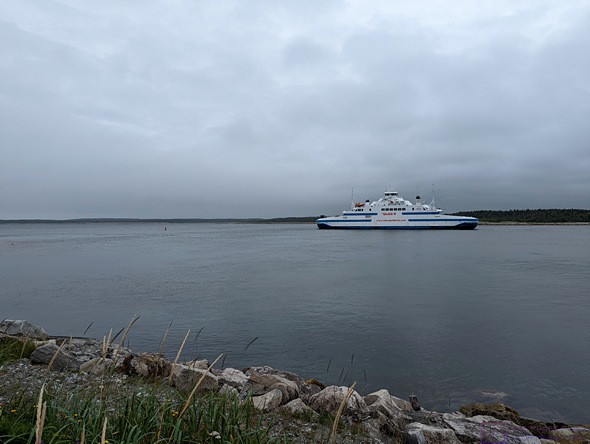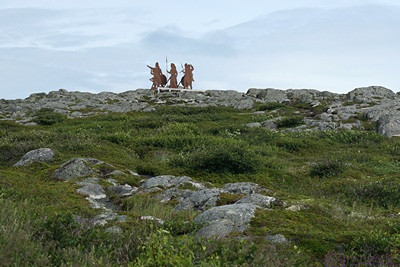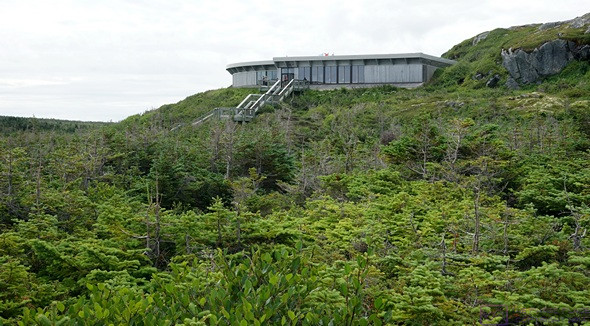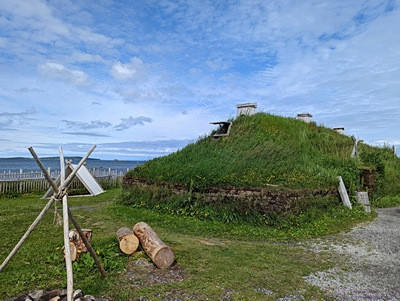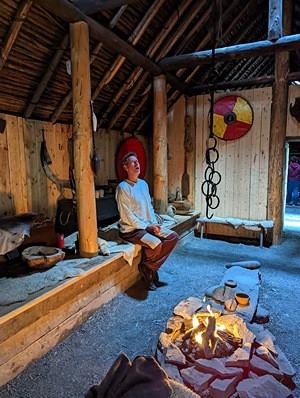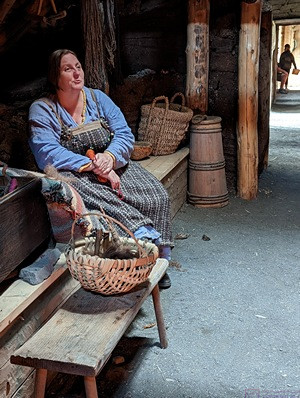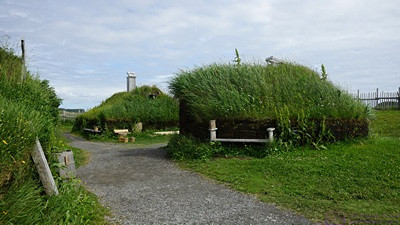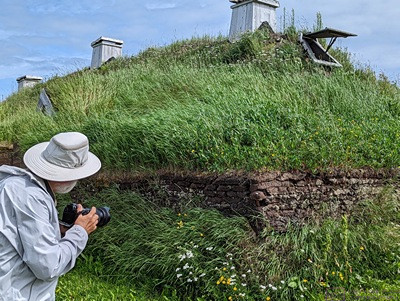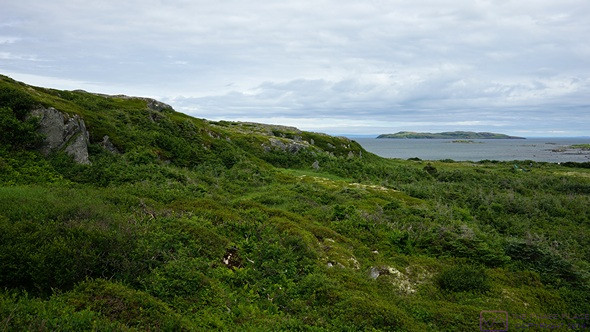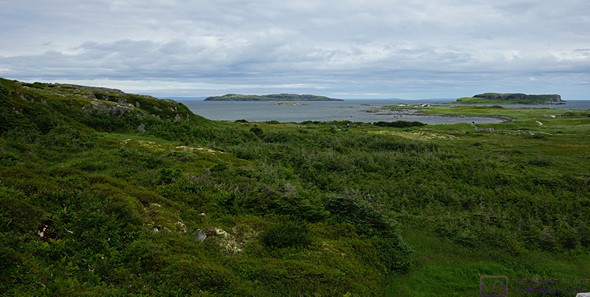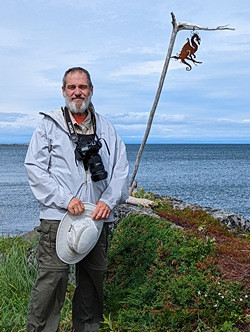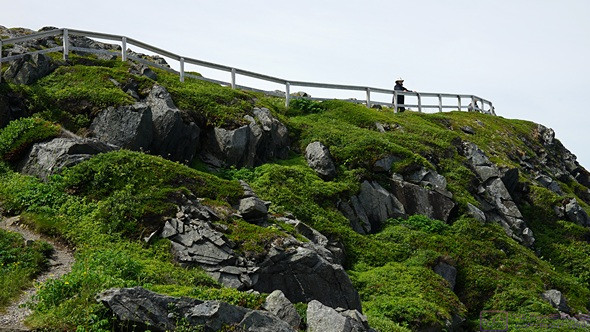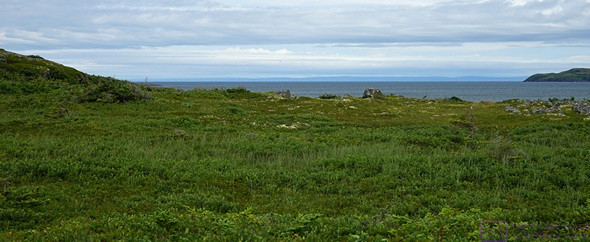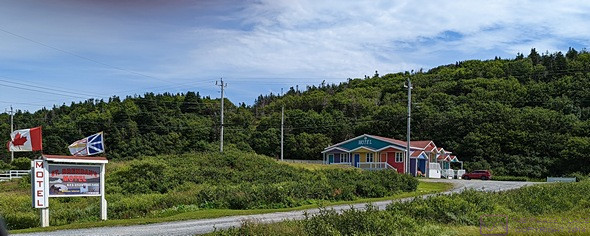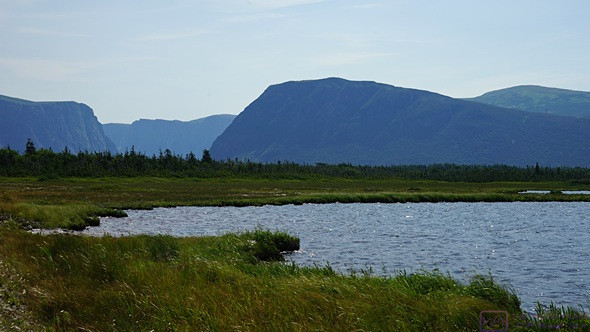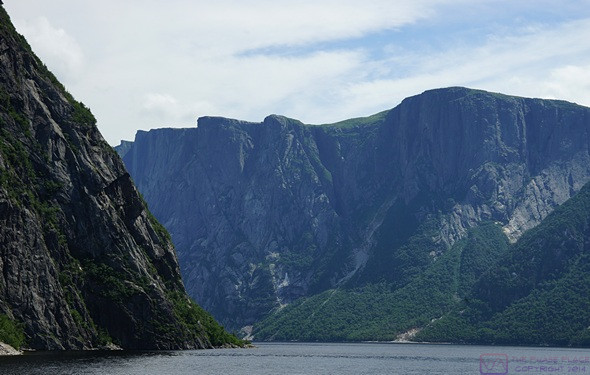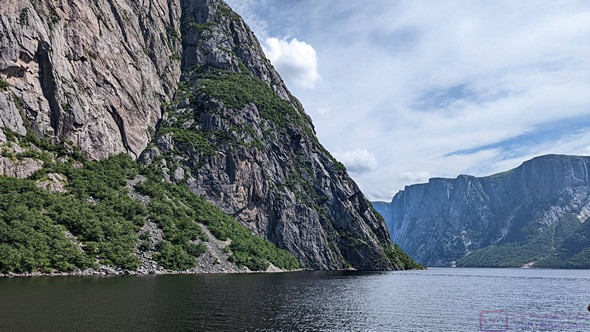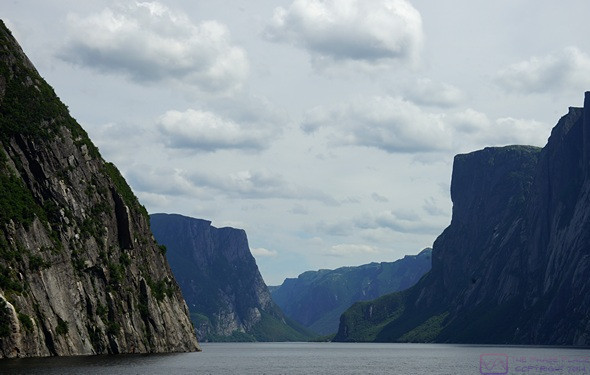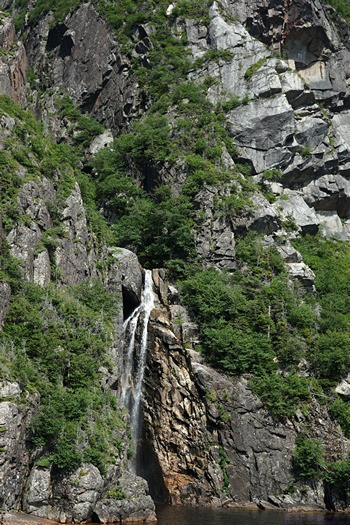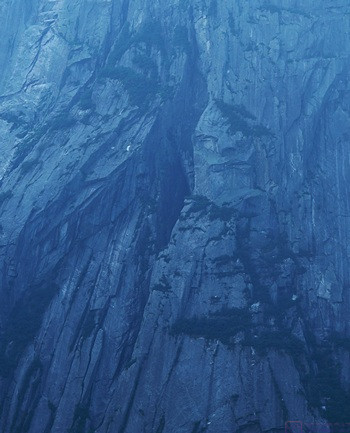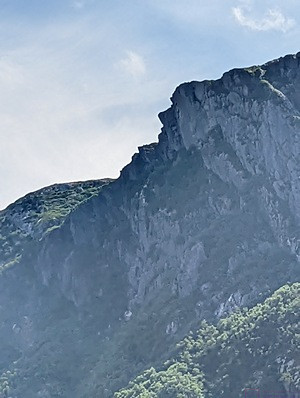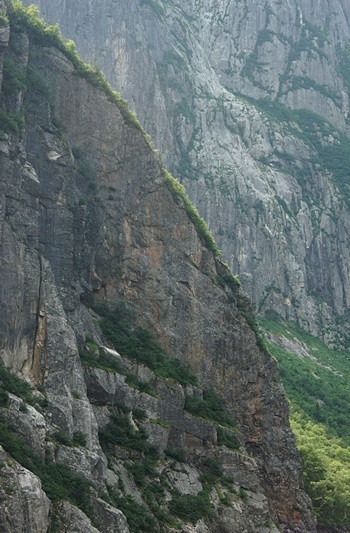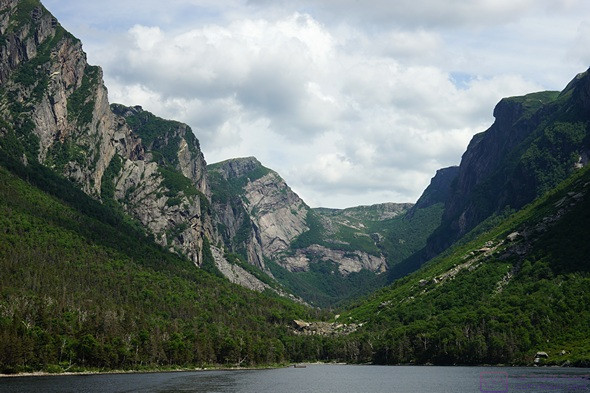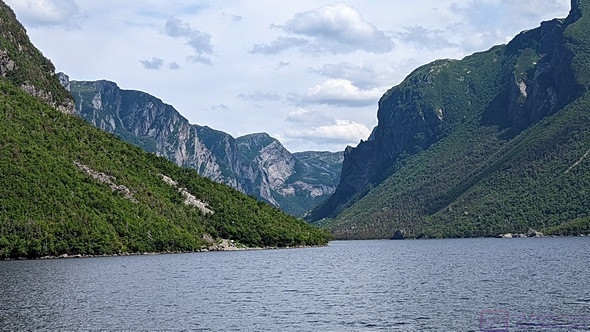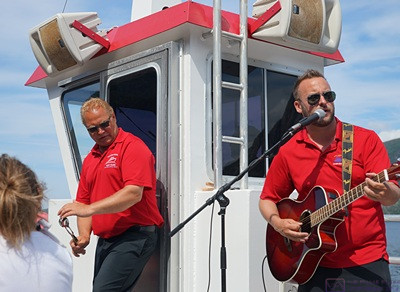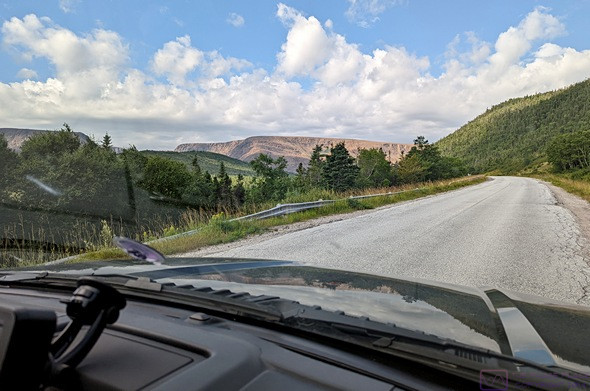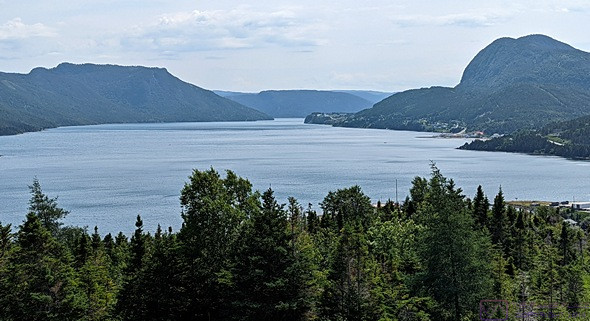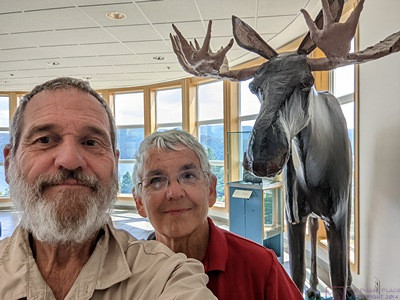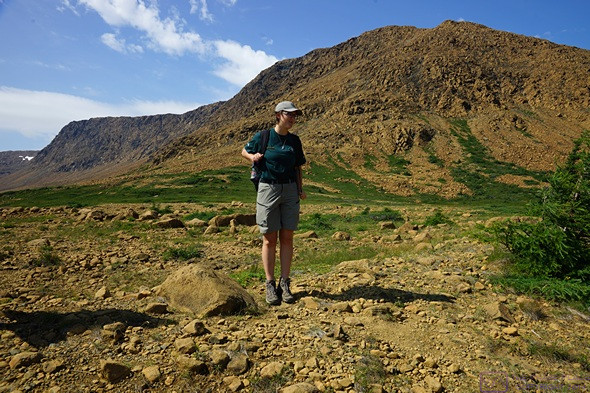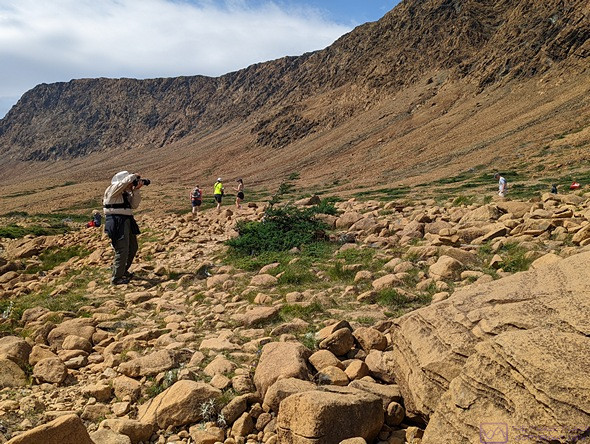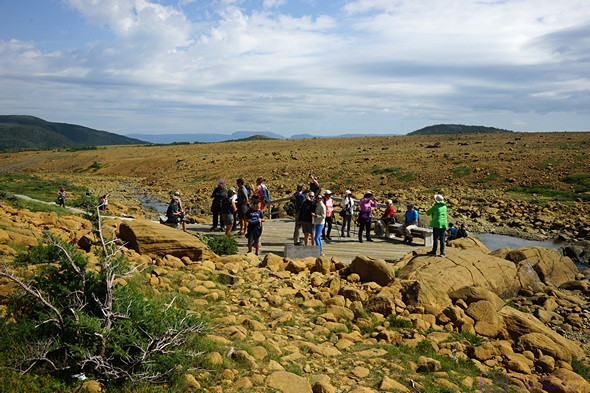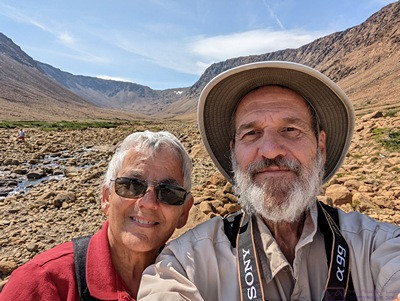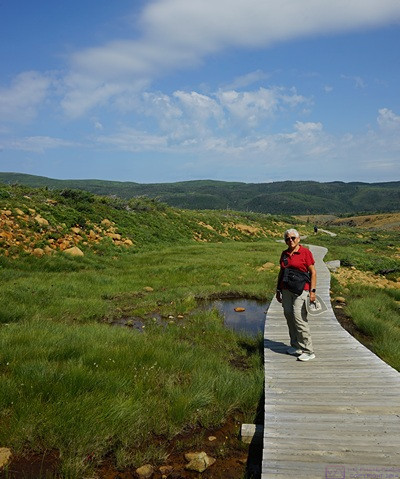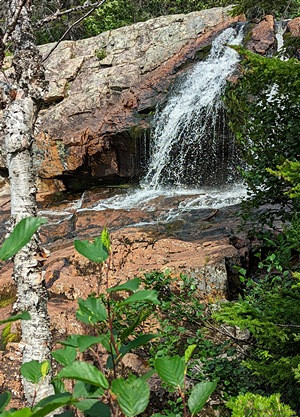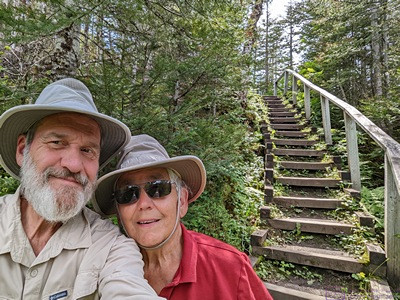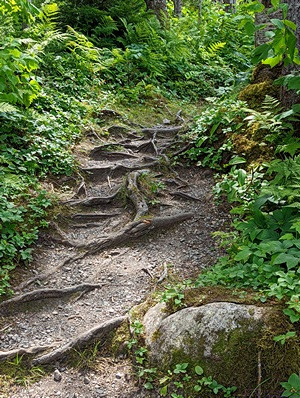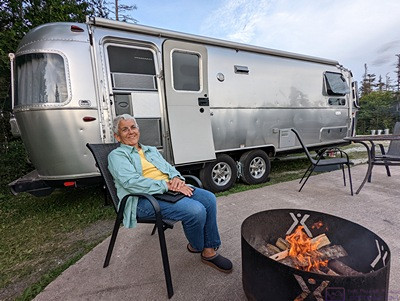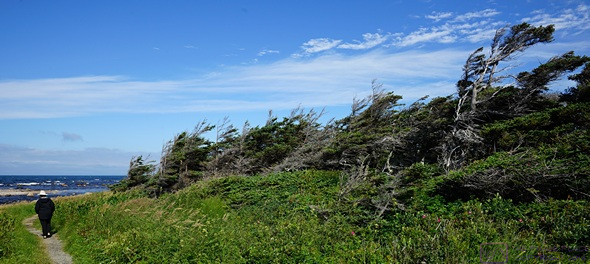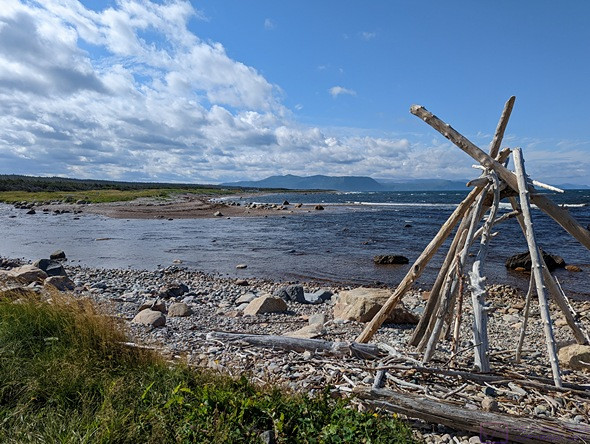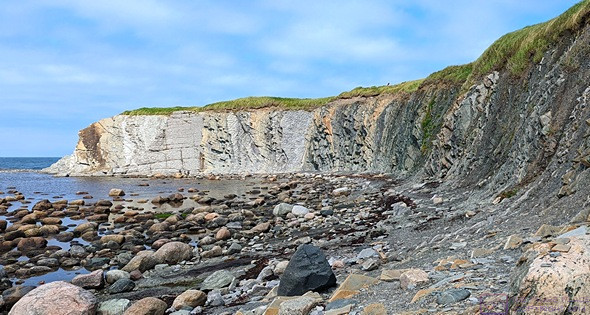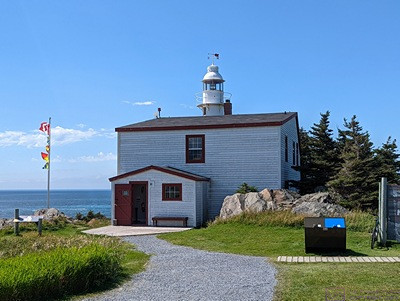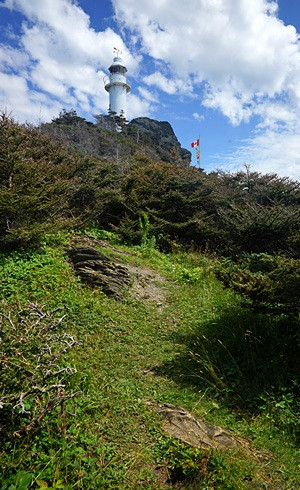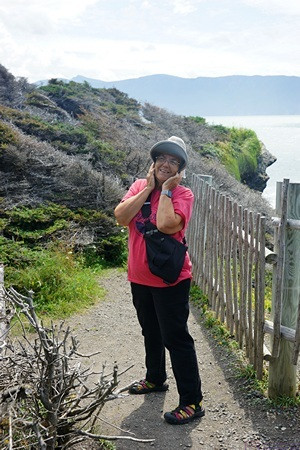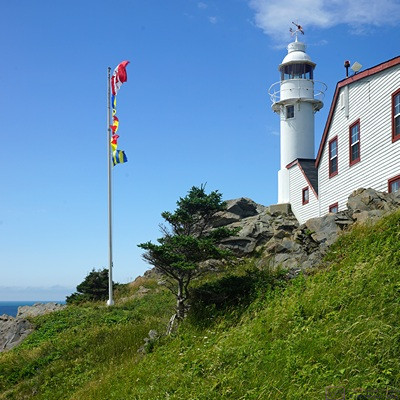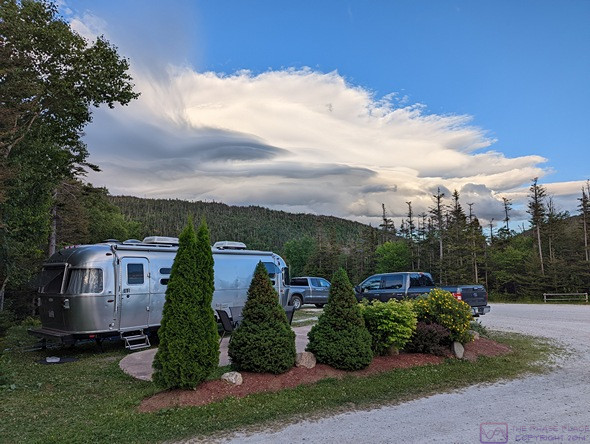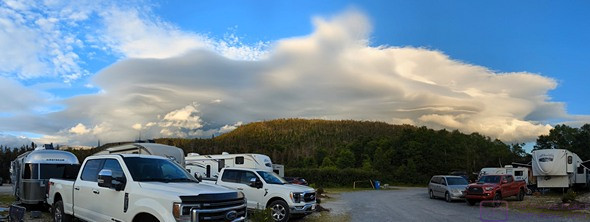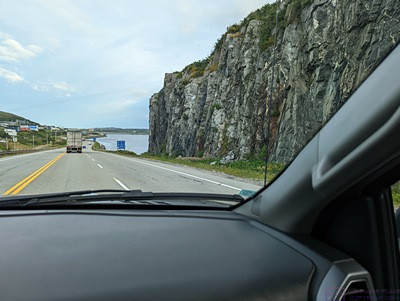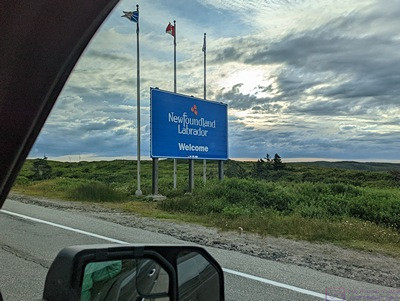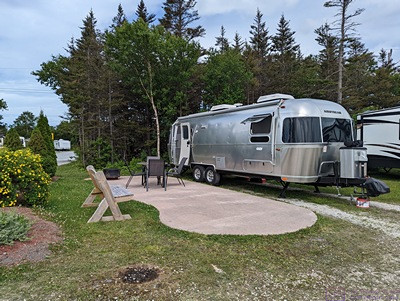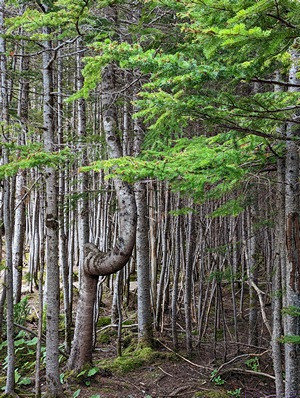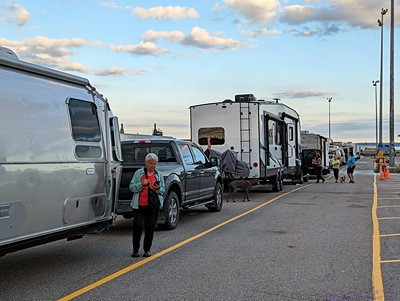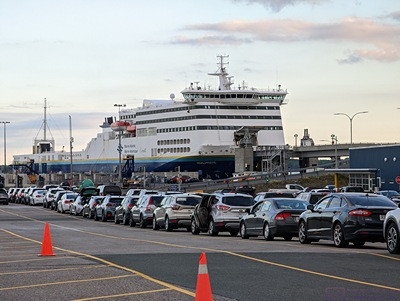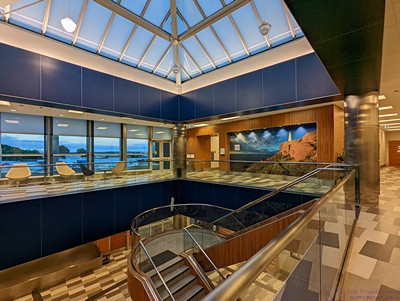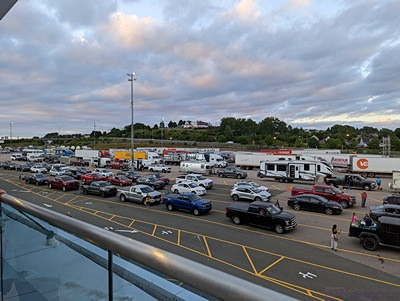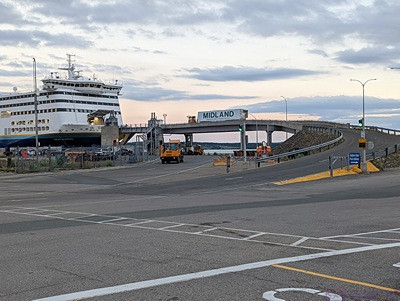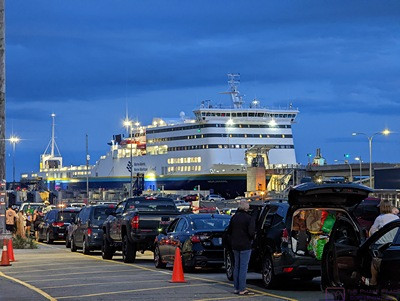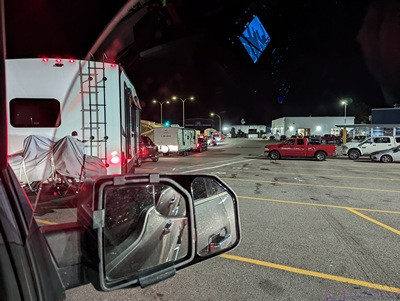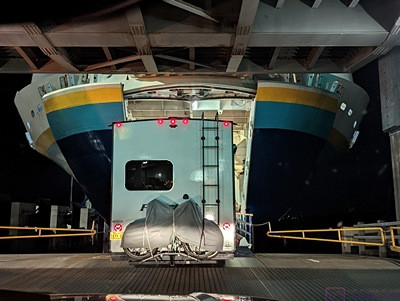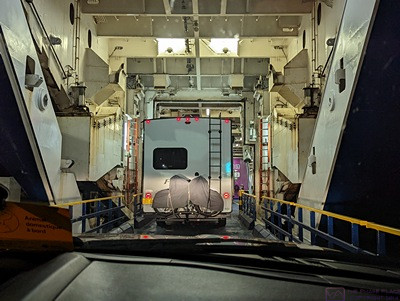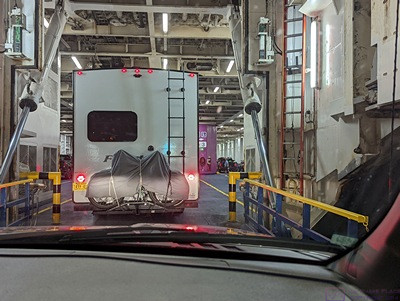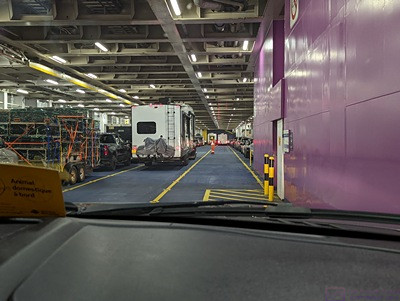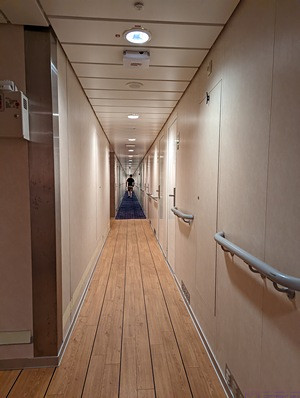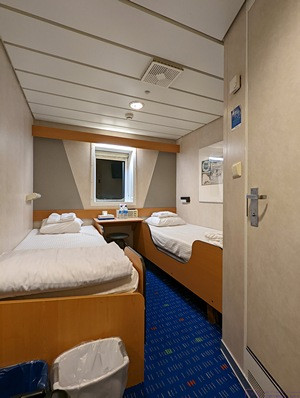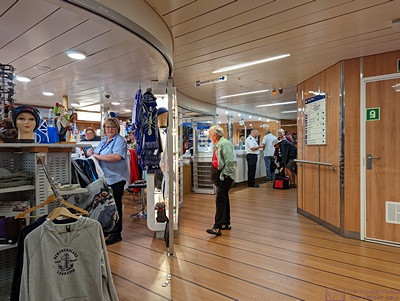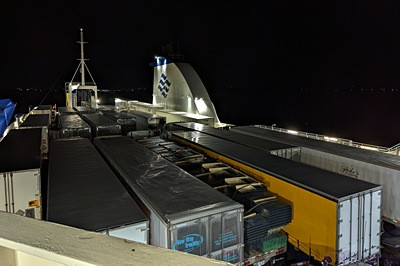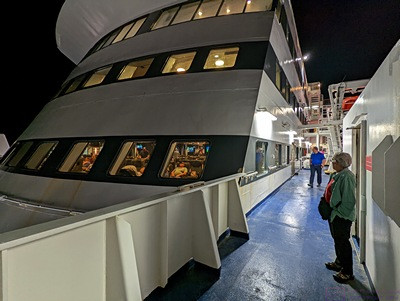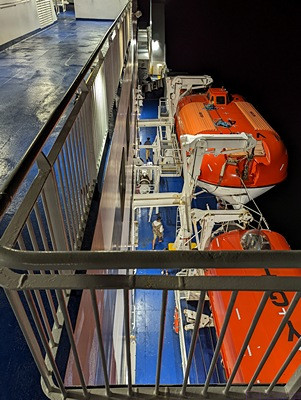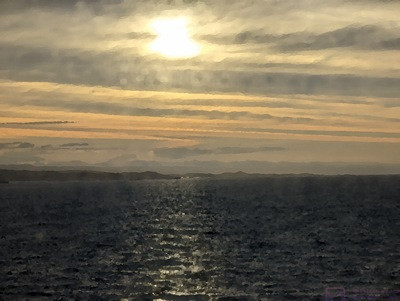FRIDAY 26 August
(Note: This post contains 9 photos and lots of words. Proceed with caution.)
Today was a big day for us. It was a major travel day, but also our last day in the Newfoundland portion of the Province of Newfoundland & Labrador, Canada. We enjoyed our time here and are a bit sad to be leaving. We saw and did a lot, but there was even more we did not get to see or do. We wish we could have been here longer, but we still have half of Nova Scotia, and southwest New Brunswick, to explore before wrapping up or time in Atlantic Canada. Even after re-entering the USA, we will be a month from home, with major stops in Bar Harbor, Maine, the Finger Lakes region of New York, and the Hershey area of Pennsylvania.
But the day started in a very relaxed way. The difference was that we now understood the Marine Atlantic ferry process, so we knew what to expect and how to prepare for it. As a result, we were not feeling the angst we experienced with of our first crossing at the end of July.
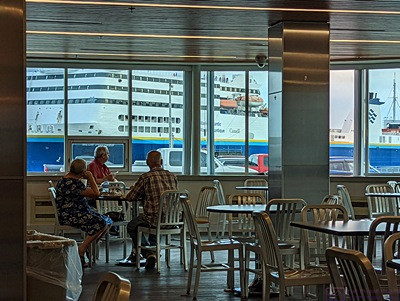
The MV Blue Puttees arrives at the Channel-Port-aux-Basque Marine Atlantic Terminal and prepares to dock. It was quite a sight to look up from our table in the terminal cafeteria and see this ship right outside the windows. (The windows in the cafeteria were clearly designed to provide an impressive view of the port/dock operations.) The ship is just completing a 180 degree turn and starting to back into the loading dock area, which is around to the right of this photo.
It also did not require an early start, which made for a more relaxing day. We knew we could stay in the campground until at least 2 PM (normal check-out time here), and possibly into the late afternoon (if needed). Equally important, we had determined yesterday that we could get to the ferry terminal any time after the morning ship left around noon. That allowed us to sleep in, have coffee and breakfast, and take our time getting ready to leave. Breakfast was our vegan versions of bacon, egg patties, toast, and fresh blueberries.
As much as we wanted to stay at the campground, with shorepower for the refrigerator, we also wanted to get to the ferry terminal and then relax there until time to board. Equally important, the ferry terminal had functioning Wi-Fi and we wanted to take advantage of that. We had enough experience running the refrigerator on propane that this was not a concern, and we knew the staging area was relatively flat/level. Also, the weather was partly to mostly sunny, so the batteries and solar panels/charger would more than keep up with the small DC power draw of the refrigerator control board.
We targeted a 2 PM departure from the campground, and took our time breaking camp and hitching-up. We’ve done this enough that we now had a good sense of how long our tasks typically take. We pulled out a few minutes before 2 PM. The 22 mile (36 km) drive to the ferry terminal took about 30 minutes. It took about 15 minutes to clear security and get our boarding passes and room key, and then a few more minutes to clear the agriculture inspection and cleaning station. (More details on this are in a caption for one of the photos.) We drove around to the staging area and were queued up in Lane 9 (of 39). We were first in line, and the first RV to arrive. Quite a few trucks were already there, and a few other vehicles, but the massive staging lot was mostly empty.
Our cell phones appeared to be back in service, but we restarted them just to make sure. We sent a few text messages and made a couple of phone calls to update our status with various people. We tried to connect to the Marine Atlantic Wi-Fi system, but the signal was too weak. I wanted to upload, assemble and publish several blog posts covering the past week. They included photos, so I did not want to do this by hot-spotting my phone.
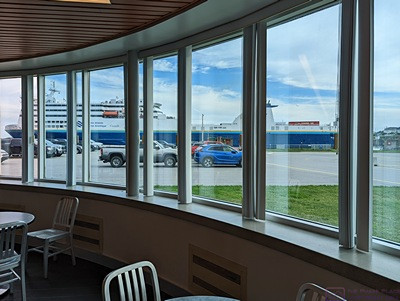
A view of the MV Blue Puttees ferry ship from the panoramic windows of the Marine Atlantic terminal cafeteria. It is the sister ship to the MV Highlanders, that we took from North Sydney, NS to Channel-Port-aux-Basque, NL on July 28/29. The ship is over 200 meters long and has 10 decks. Decks 1/2, 3/4, and 5/6 are the cargo/vehicle decks. Deck 7 is open seating after (with a coffee and snack bar), the concierge, gift shop and Wi-Fi lounge center, and the restaurant and bar forward. Deck 8 is open seating aft and cabins forward while Deck 9 is reserved seating. Deck 10 is the bridge forward with the heliport behind it, ship structure behind that, and a passenger accessible deck aft.
I took my laptop computer to the terminal and sat at a table in the cafeteria. The Wi-Fi signal wasn’t that strong, but stayed connected and provided reasonably fast data rates. I had two blog posts ready to go, so uploaded the photos to the media library in WordPress, and then assembled and published each one. As long as I was in WordPress, I cleared the SPAM comments that the Akismet plugin had trapped. There wasn’t anything else I could do in WordPress so I logged out. As long as I was online, I checked e-mail and then logged in to the control panel for our domain, went to the SPAM quarantine, and cleared it out. I then shut the computer down and went back to our trailer. I had additional blog posts to work on, including processing photos. This did not require me to be online, so I stayed in the trailer with Juniper-the-cat while Linda went to the terminal and updated her iPad. In order to run the power supply for my computer, I needed AC power and turned on the inverter in the trailer. As best I recall, we had never used the one in the trailer, but it worked great. (We occasionally use the one in the truck, but the engine has to be on for it to operate.)
As the afternoon morphed into evening, vehicles started rolling in. A trickle at first, but eventually a flood. The longest queuing lanes are numbers 1 – 9, and this is where they staged most of the automobiles and pickup trucks. I got the impression from the crew that specific lanes were used for vehicles with pets. Land 10 was RVs and Lane 11 was ATVs. After that came a mix of vehicles, including a tour bus in Lane 14 (I think). From about Lane 16 on it was mostly large/long/heavy trucks, although not all of these lanes were in use.
By 5 PM we getting hungry and started tossing around ideas. The only thing the cafeteria had that we would eat was French fries, but it had been a long time since we had any of those, so that was our dinner choice. We walked back to the terminal and took my laptop computer and iPad along. Dinner wasn’t fancy, but the fries were good, and very satisfying. I uploaded, assembled, and published my remain blog posts and was caught up. I also updated my iPad and phone.
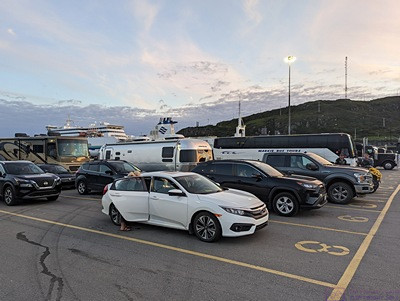
The staging area at the Marine Atlantic terminal in Channel-Port-aux-Basque with the MV Blue Puttees ferry ship in the background. Our truck and trailer are center-frame, first in line in Lane 9 (the RV lane).
While we were eating and working, the MV Blue Puttees arrived in the harbor and commenced docking. The cafeteria had big windows, and the ship wasn’t that far away, so it was really something to watch; like an elephant doing the slow, graceful dance moves.
MV Blue Puttees is the sister ship to the MV Highlanders that we were on to get to Newfoundland, and they load and unload in the same way. We figured out that they dock at the North Sydney, Nova Scotia, terminal “bow in,” so that loading takes place through the bow. At the Channel-Port-aux-Basque terminal, they have to dock “stern in” to unload as all of the vehicles are pointing in that direction. (Obviously, both sides are equipped with the necessary hatches and loading ramps on each end.) In order to dock “stern in,” the ship had to enter the harbor and then execute a 180-degree turn. This was not a problem; the bow and stern thrusters on these ships can turn them around their mid-points.
Once the ship was secured and the integral ramps were mated up to the adjustable shore ramps, the dis-embarkation began. The ramps are on two levels, one directly above the other. The upper loading ramp is dedicated to Decks 5/6, and was accessed by a long shore ramp. Deck 5/6 is really just one double-height deck and is not fully enclosed, the stern-most part having nothing over it, and the rest being under the upper superstructure of the ship, but open to outside air.

A night shot of the four entrance booths and the agriculture inspection building (to the left in the photo). All vehicles come through a security checkpoint, and then the agriculture inspection building, before going to the entrance booths. In our case, the security checkpoint had also been the entrance booth, but as the day wore on and the volume of incoming traffic increased, they opened the entrance booths shown here. The entrance booth is where they verified our reservation, verified our identities, and gave us our boarding passes and cabin key. (Passengers with reserved seating on Deck 9 would get their seat passes here.) At the agriculture inspection building, they wanted to know if we had any potatoes, carrots, or turnips. It turned out that the soil in Newfoundland has several organisms that could wreak havoc on the potato crops on the mainland. The building was also a wash-down facility, like a car wash. All of the ATVs, for example, got thoroughly rinsed as then came through the building.
The lower ramp serves Decks 1 /2 and 3/4. Again, these are double-height decks to accommodate tall vehicles like tractor-trailers and RVs. Deck 3 was a little above shore level, and was unloaded before Deck 1. Buses, RVs, vehicles with utility trailers, came off of Deck 3. To unload Deck 1, the integral loading ramp is lowered internal to the ship. This is the deck where most of the passenger vehicles are loaded, unless they have pets on board, in which case I think they load them on Deck 3.
Marine Atlantic has special tractors that they use to unload “drop-trailers.” We had heard this term but didn’t really understand it until the owner of one of the ATVs parked next to us explained. Companies like “ARMOUR,” whose trucks we have seen everywhere in Eastern Canada, “drop off” semi-trailers in special holding areas at the Marine Atlantic terminals (including the one in Argentia, NL). Marine Atlantic then uses their tractors and employees to load and unload these trailers from their ships. Once the trailers are taken off the ships at the other end, regular over-the-road tractors/drivers pick them up and take them to their final destinations. Although the trucking companies bay for this service, it allows them to move trailers between Nova Scotia and Newfoundland without having drivers make the trip with them.
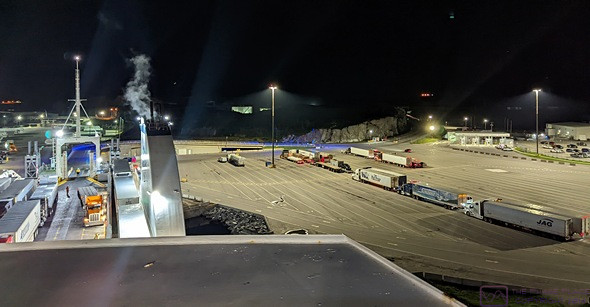
A view towards the stern of MV Blue Puttees showing the stern loading ramp for Deck 5/6 and part of the exposed portion of the deck. The ship was mostly loaded by this point, with just a couple of tractor-trailers waiting to board.
Once the drop-trailers were unloaded, the embarkation process could begin. But, built into the turnaround process was time to clean the ship, especially the cabins, and (we think) change out the operations crew. (For the same crew to take a ship one way and then bring it back, they would have to work 30-hour shifts, which would not be safe.) Because Deck 5 had a dedicated loading ramp, large trucks were some of the first vehicles to start going onboard. For the lower ramp, loading started with Deck 1. First on were ATVs and motorcycles, as these are relatively small and light and get parked along the outside edges of the deck. Regular passenger vehicles were loaded next, and they put a LOT of them on Deck 1. When Deck 1 was full, the internal ramp was reset for Deck 3, and it was finally out turn.
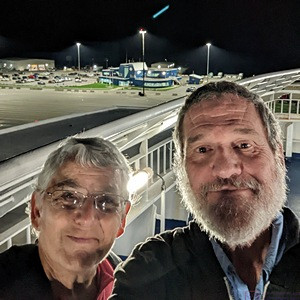
Our obligatory selfie looking towards the port side of MV Blue Puttees from the aft portion of Deck 10. From here we could see all 39 lanes of the now mostly empty staging area. The large blue building, center-top, is the terminal, which is actually shaped like a ship.
It had been made very clear to us yesterday, that we needed to through the check-in booths not later than 2 hours before scheduled departure. Our ship was scheduled to sale at 11:45 PM, so that meant 9:45 PM. When we finally boarded around 10 PM, all kinds of vehicles were still coming in. To their credit, Marine Atlantic accommodated them.
The loading process took several hours and involved hundreds of vehicles and drivers. It also involved dozens of Marine Atlantic employees working in a very coordinated way. The coordination reminded me more of the Borg Collective than something centrally administered, but whatever their system, it definitely works.
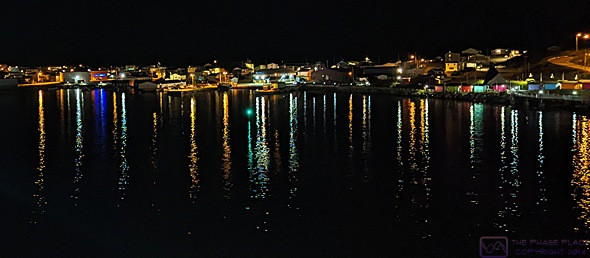
A view of the peninsula that forms the south side of Channel-Port-aux-Basque Harbor, as seen from the starboard side of MV Blue Puttees, sailing to the left in this photo.
Even through RVs were some of the last vehicles to load, we were on the ship much earlier than the last time. We found our cabin, dropped off our suitcase, got some coffee, and then strolled around the ship. The only real difference from MV Highlanders, is that MV Blue Puttees serves a table service breakfast while MV Highlanders has a breakfast buffet. We stayed up long enough to watch the ship depart the dock and most of the harbor, and then turned in for the night.
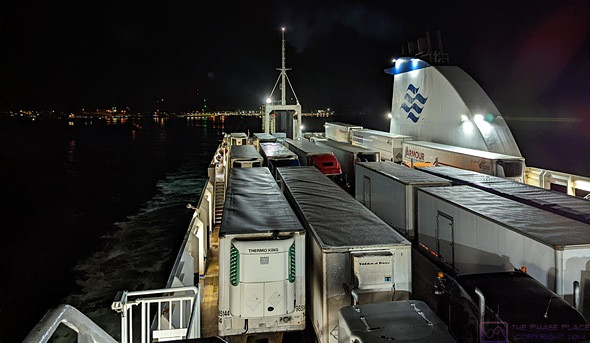
Our final view of Newfoundland as the MV Blue Puttees sails out of the Channel-Port-aux-Basque Harbor into the North Atlantic Ocean.
SATURDAY 27 August
Somewhere between Channel-Port-aux-Basque and North Sydney, we crossed the border between the provinces of Newfoundland & Labrador and Nova Scotia and moved from the Newfoundland time zone to the Atlantic time zone, gaining 1/2 hour in the bargain. Our phones made the switch automatically, but we don’t know at what point they did that.
We had a nice enough cabin, albeit an interior one with no window to the outside. It was a 3-berth, handicapped accessible one, so much more than we needed. But it was all that was available when we booked this passage back in January 2022. Neither of us slept well, however. It might have been the late-night coffee, but I don’t think so. The beds were very uncomfortable and the bedding was just strange and awkward to manage. But mostly, it was the fact that the entire ship just vibrated constantly. We had noticed this when walking around, but figured it would stop once we were underway. It did not. We did not recall experiencing this on MV Highlanders.
The breakfast announcement came at 6 AM Atlantic time and the 45-minutes-to-port announcement came 15 minutes later. Linda took a shower, one of the real perks of having a cabin. We got dressed and packed our suitcase and then went outside to watch the emergence of dawn.
We then went all the way forward on Deck 7 to the bar area (the bar was closed). We sat by one of the front-facing windows near the centerline of the ship and watched it come into the North Sydney Harbor. As it got close to the dock, we returned to our cabin and collected our suitcase. Before going to bed last night, we established that we could take stairs from Deck 8 down to Deck 3, rather than wait for one of the elevators. We headed down to Deck 7, but a crew member was blocking us from going any farther. To either side of the stairwell, large groups of passengers had already gathered, waiting for the “return-to-your-vehicles” announcement. When the announcement finally came, there was an orderly merging of the two groups and we were on Deck 3 shortly thereafter.
Although we were close to the front of our lane, we were in the far-right lane and knew the crew would move vehicles out of the center of the ship before moving us. That allowed us a little breathing room to get Juniper-the-cat from the trailer and move her to the truck, and get ourselves ready to drive. It didn’t take long after they started moving vehicles from the outside lanes, alternating left and right. Unlike the loading process, the unloading process moves right along As we pulled off the ship and around a corner to right, Linda spotted a large, open area and I pulled over there. I turned the propane back on while she went to the trailer, turned on the refrigerator, and confirmed it was operating on propane. She reported back the temperature was 48 degrees (F). Not bad. There were big enough spaces between vehicles as they came off the ship that I had no problem pulling back onto the exit road, which led directly out of the terminal to the Trans-Canada Highway (Hwy-105). We got on the T-CH westbound, and were on our way to Elm River RV Park near Truro.
…
